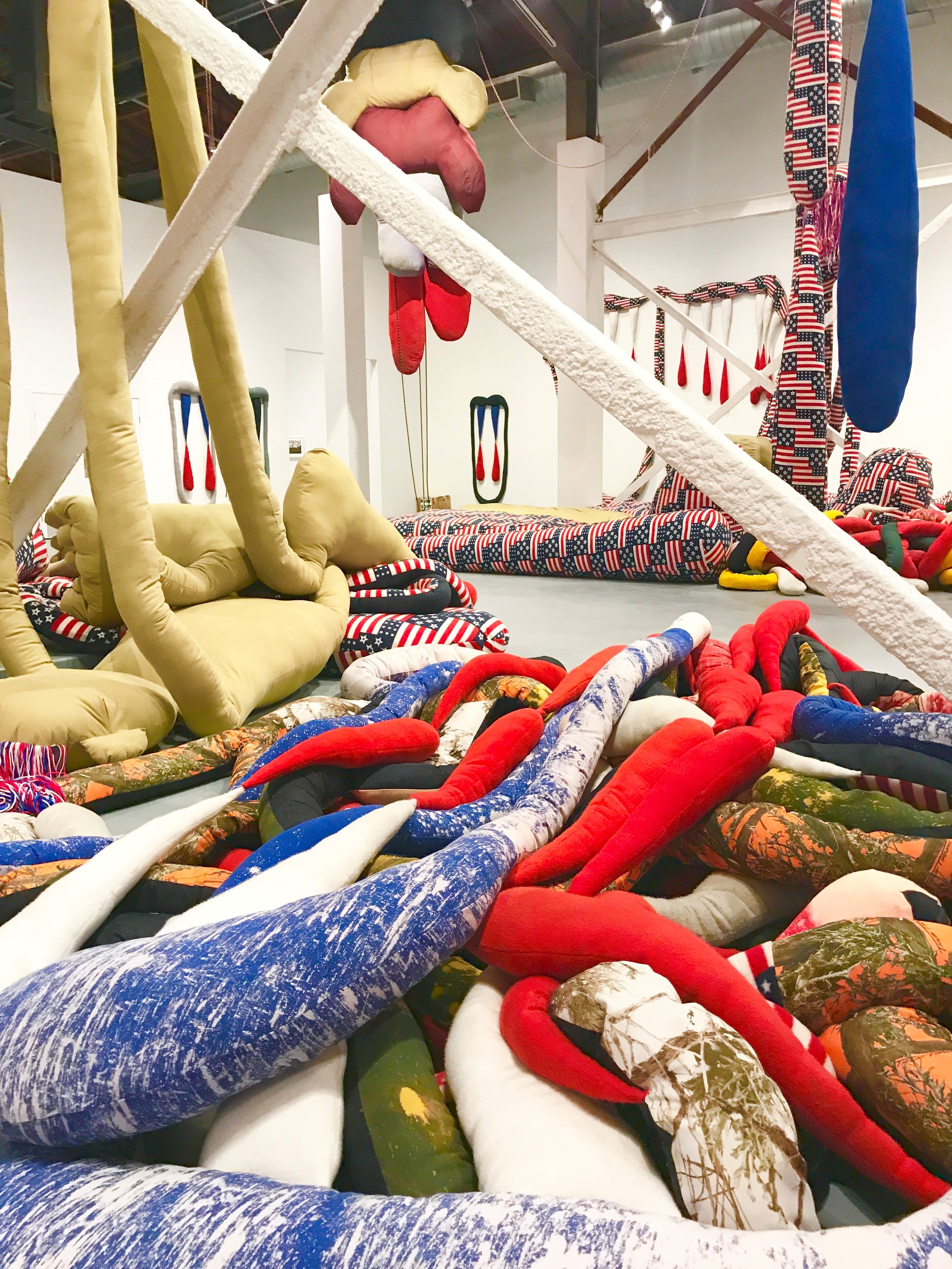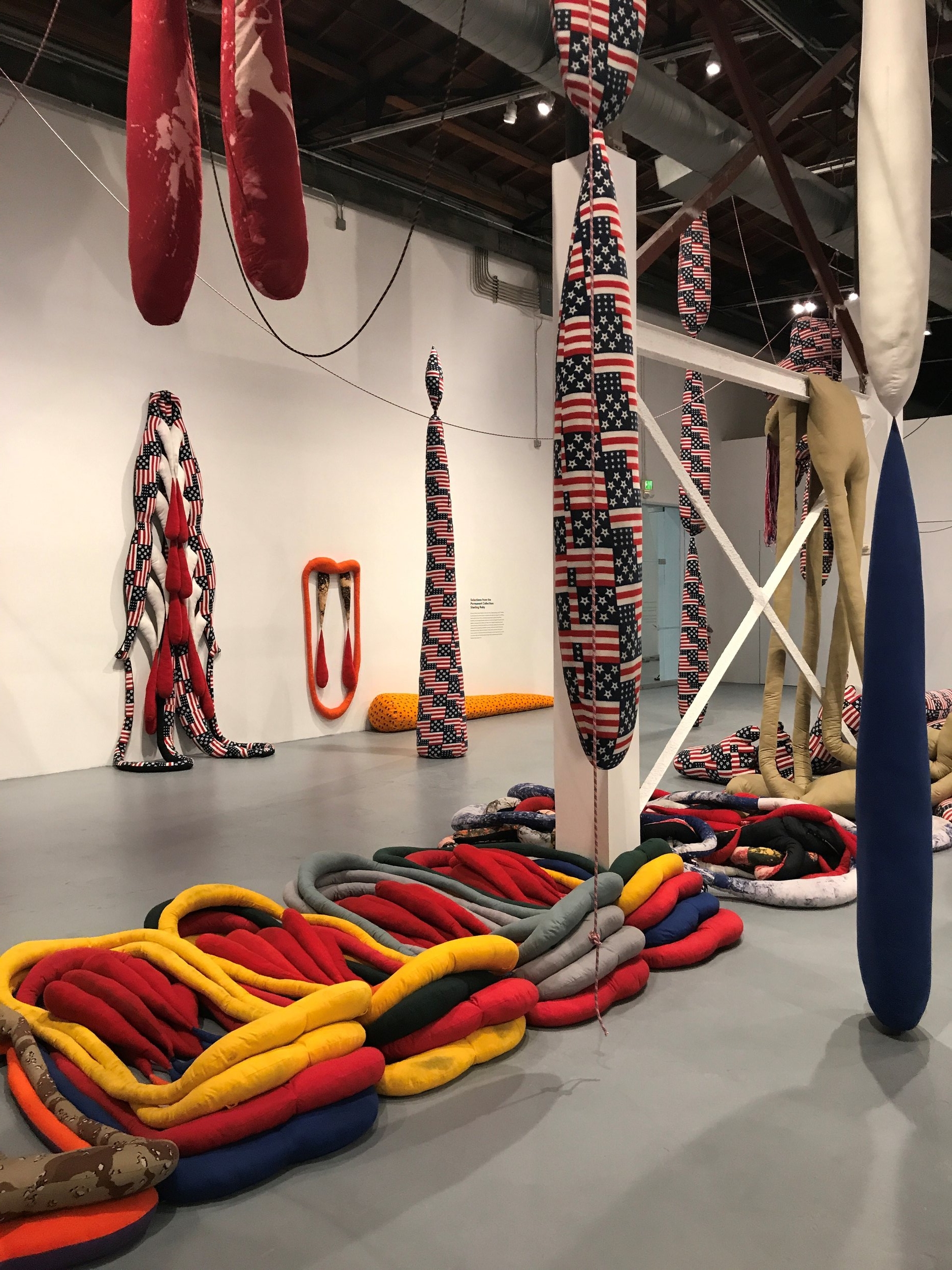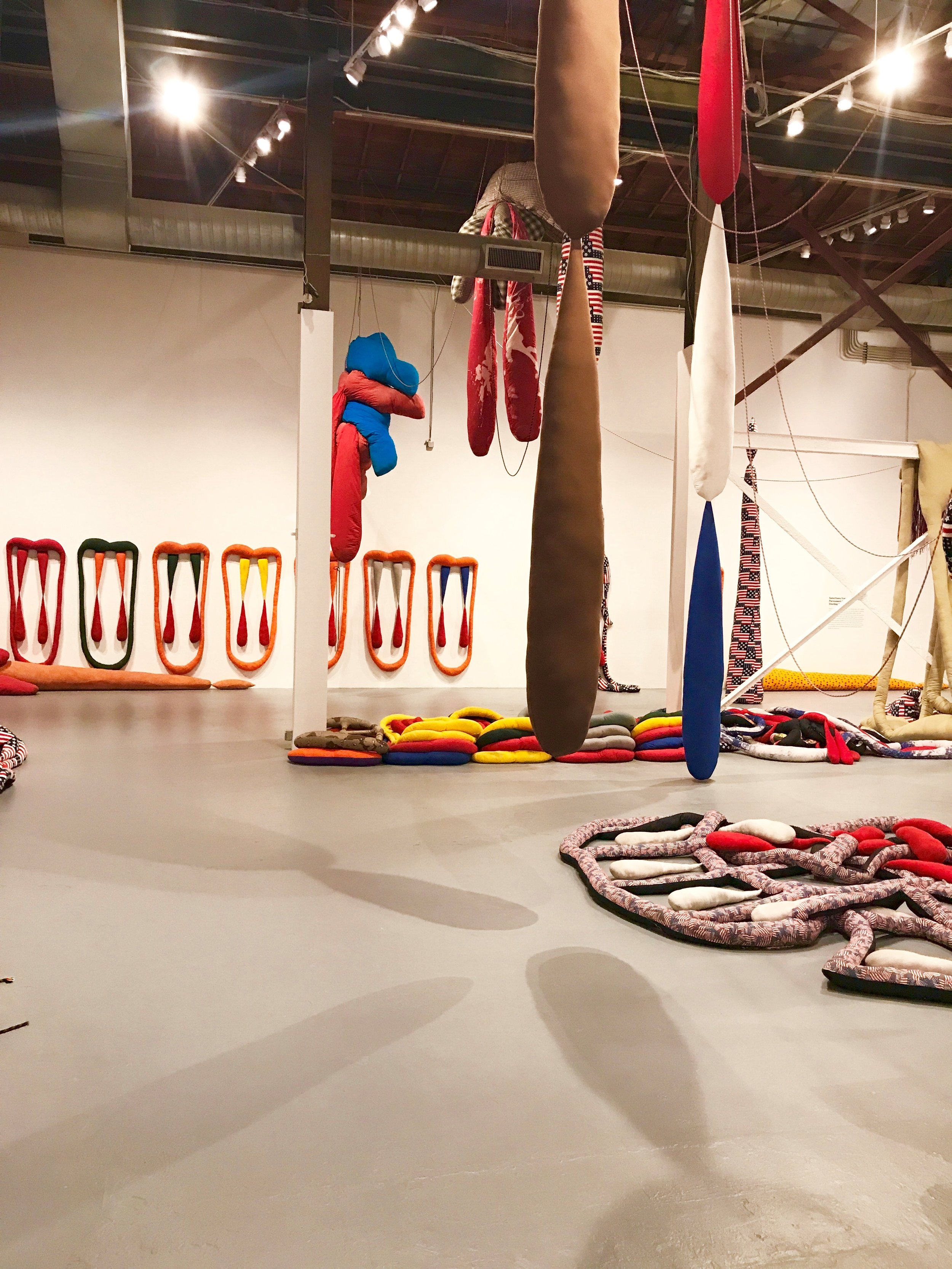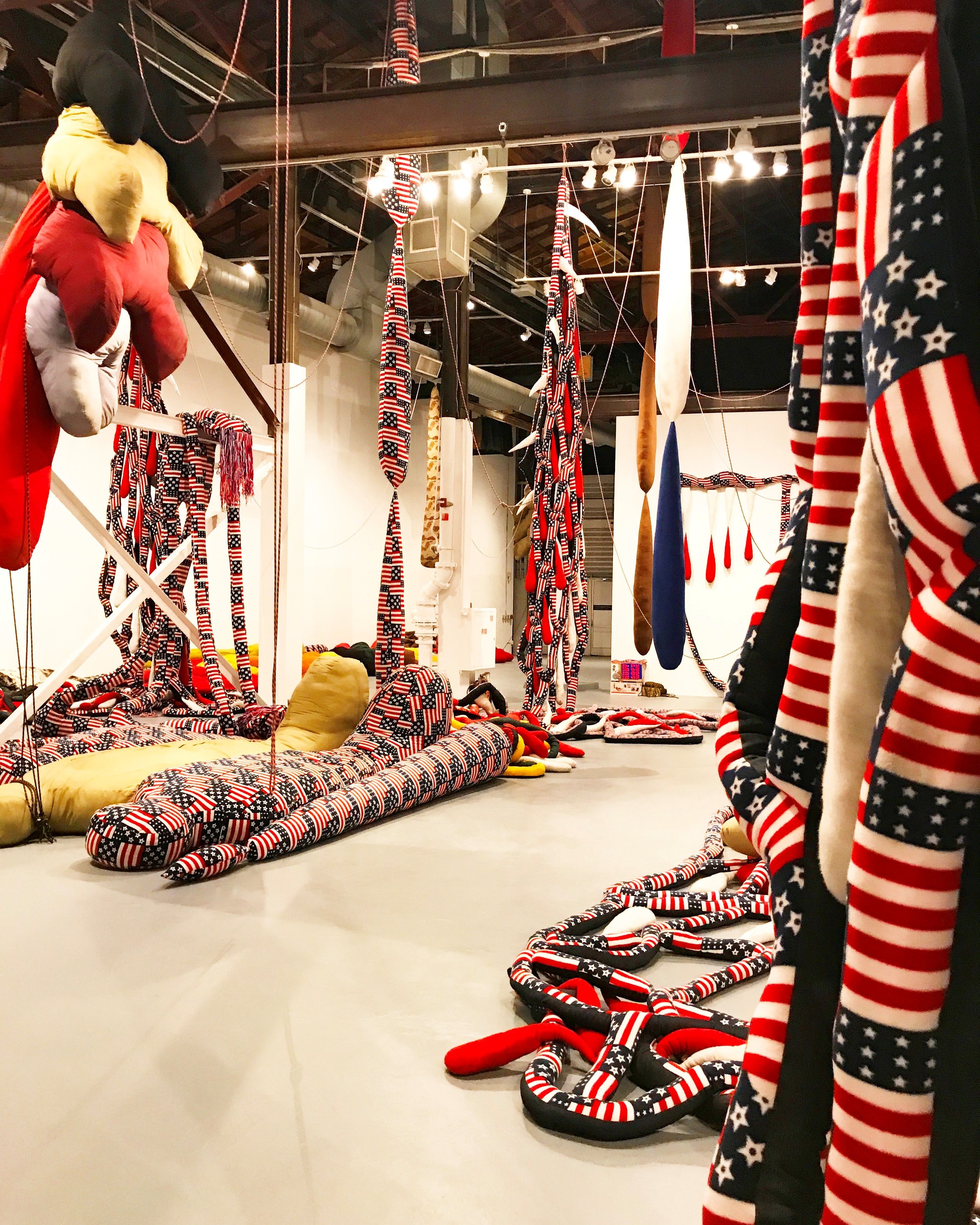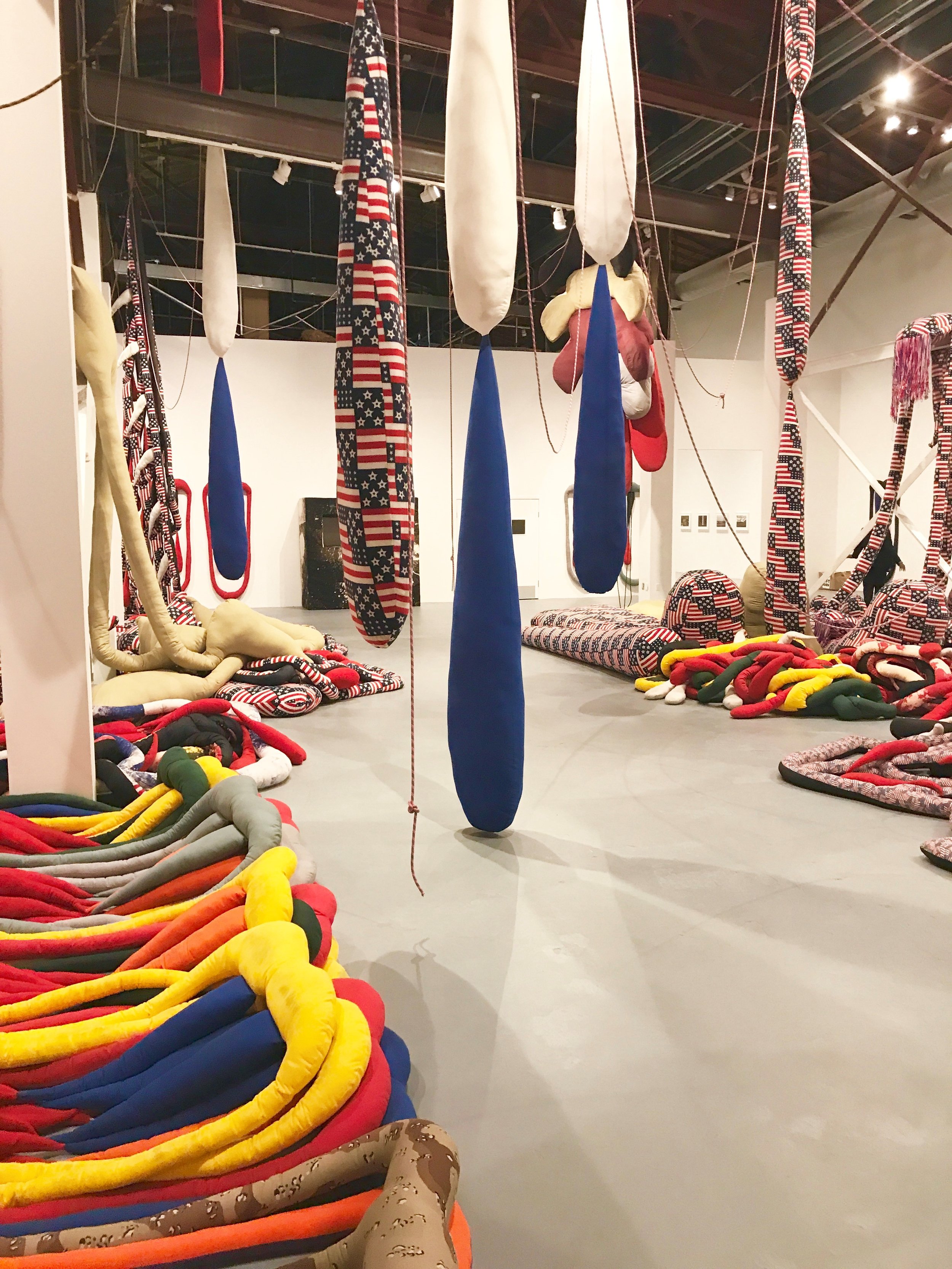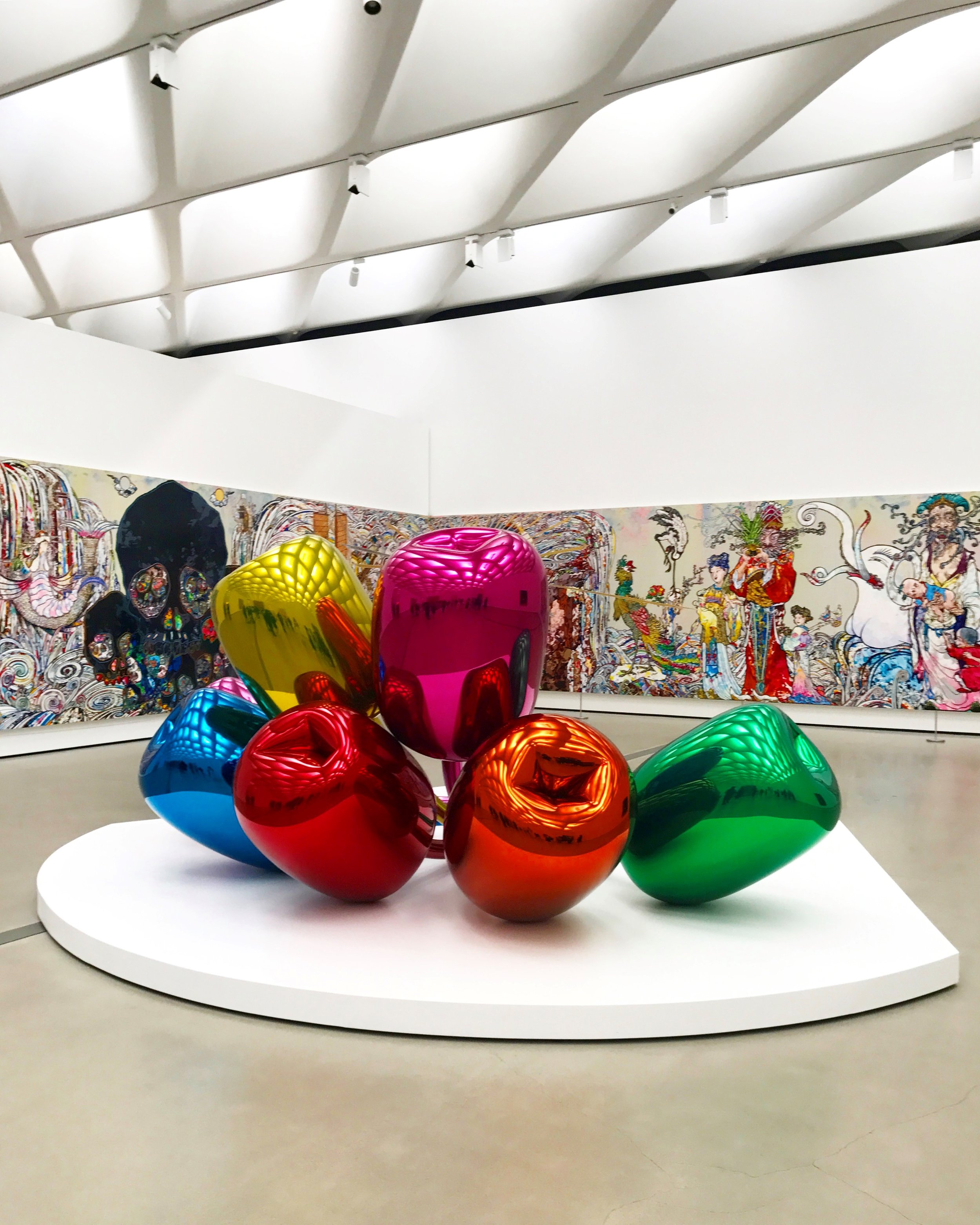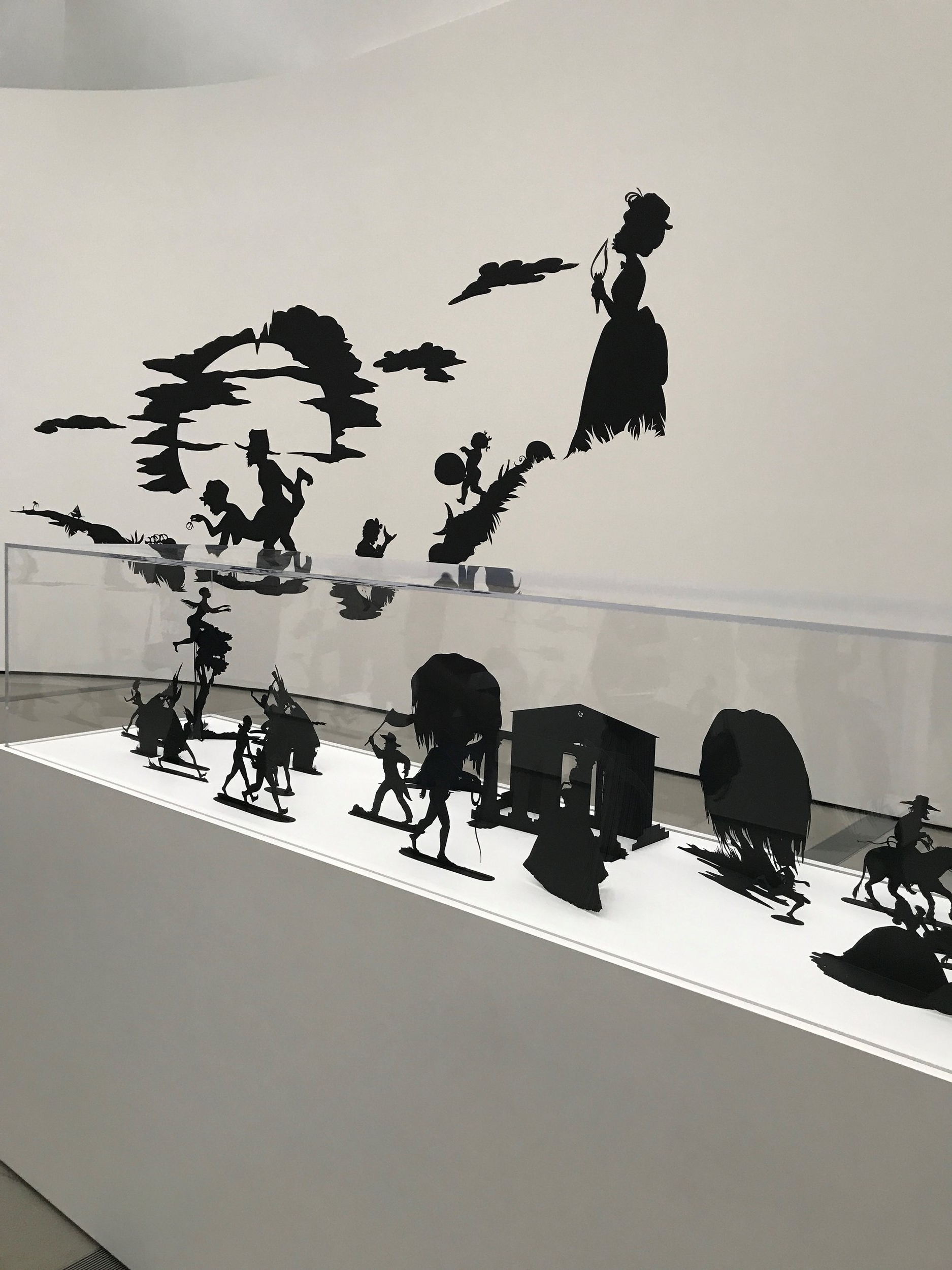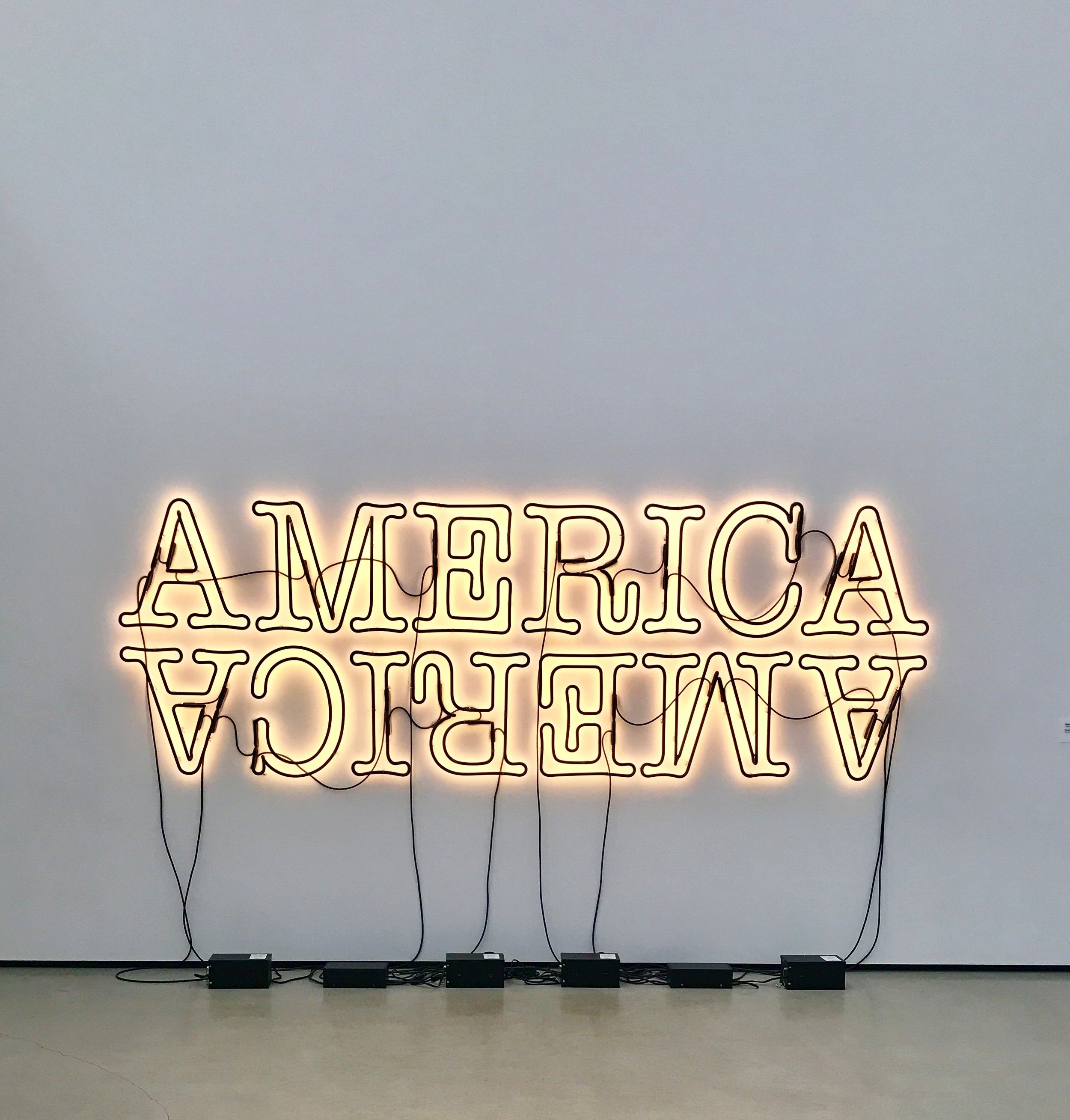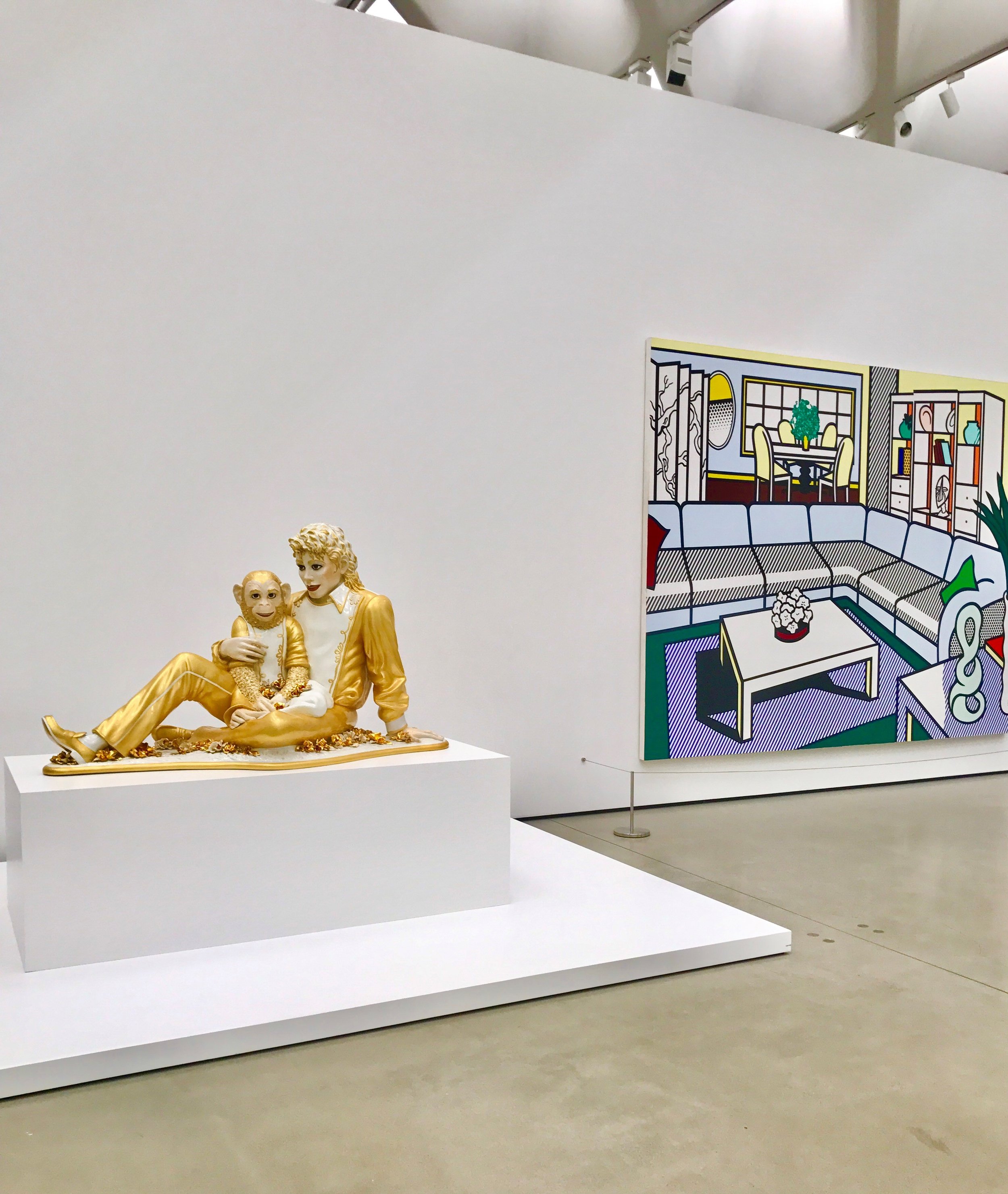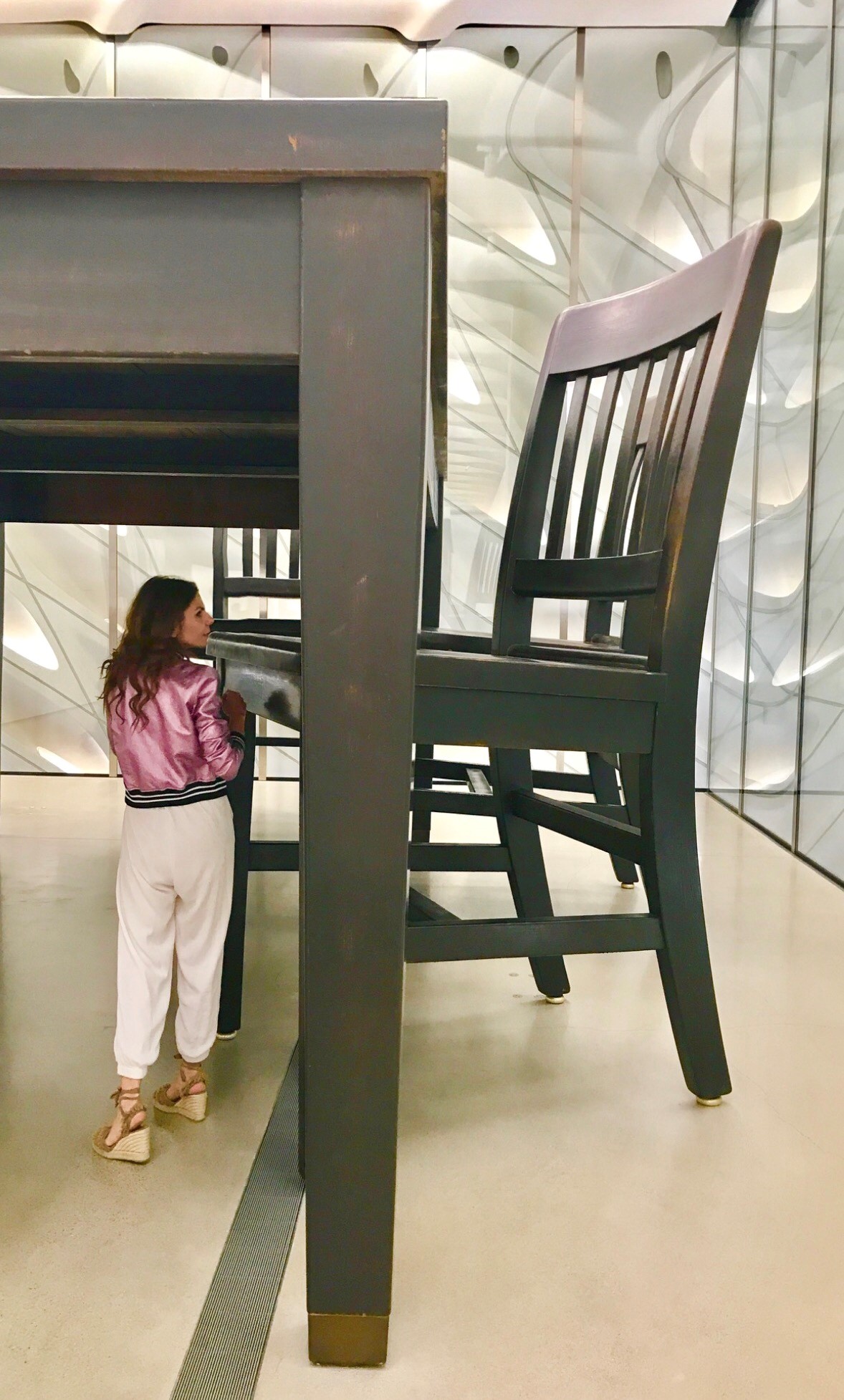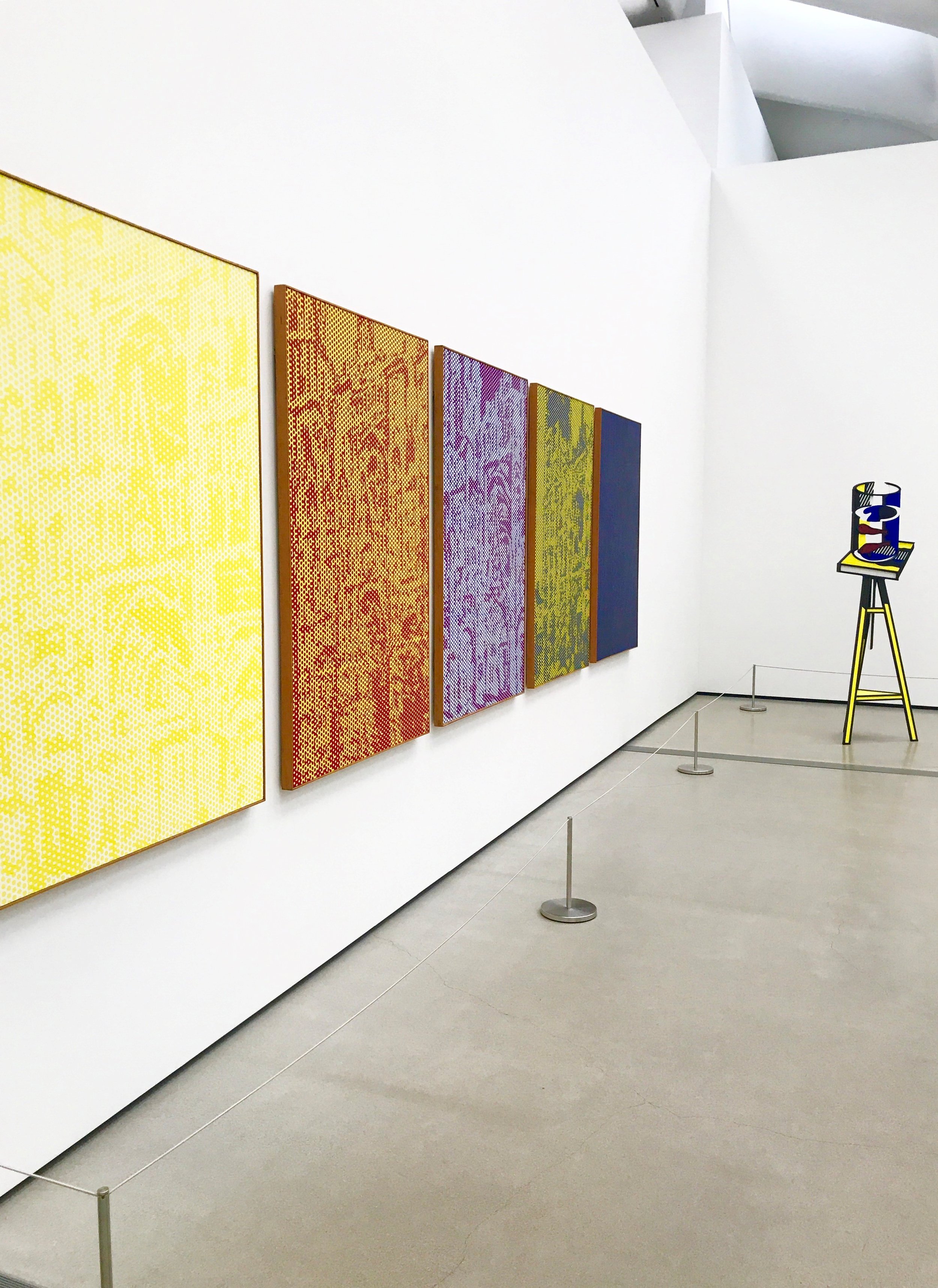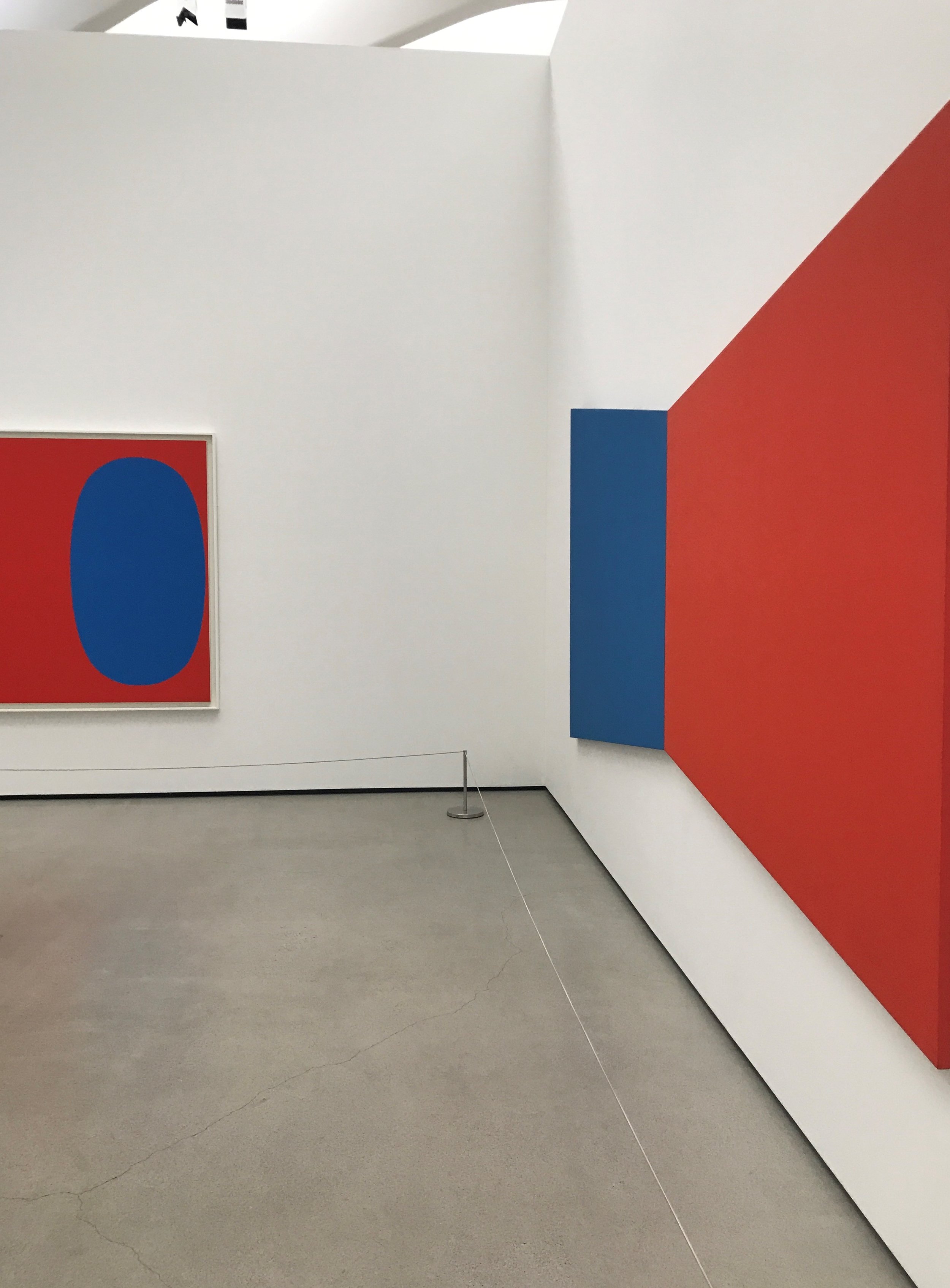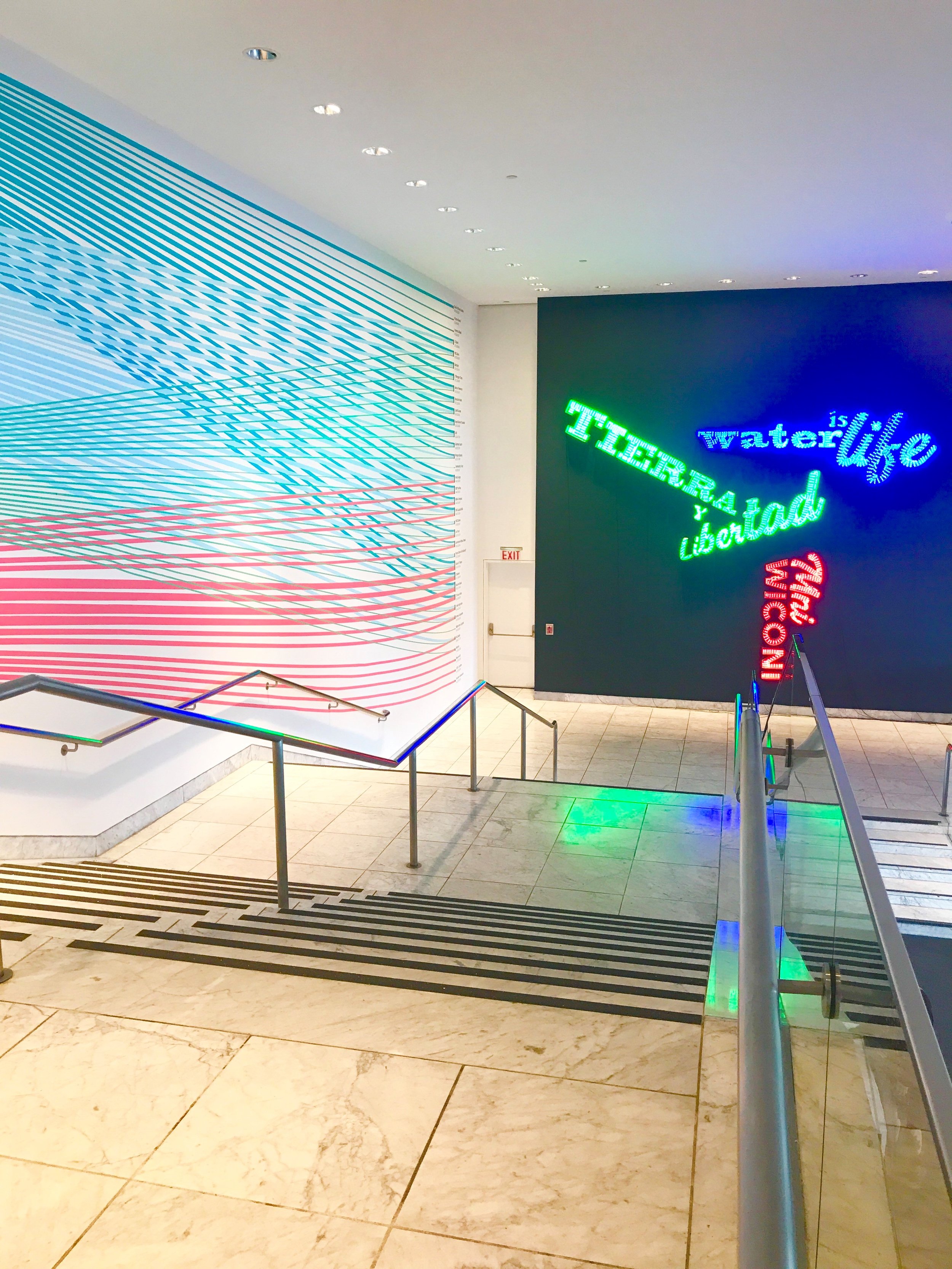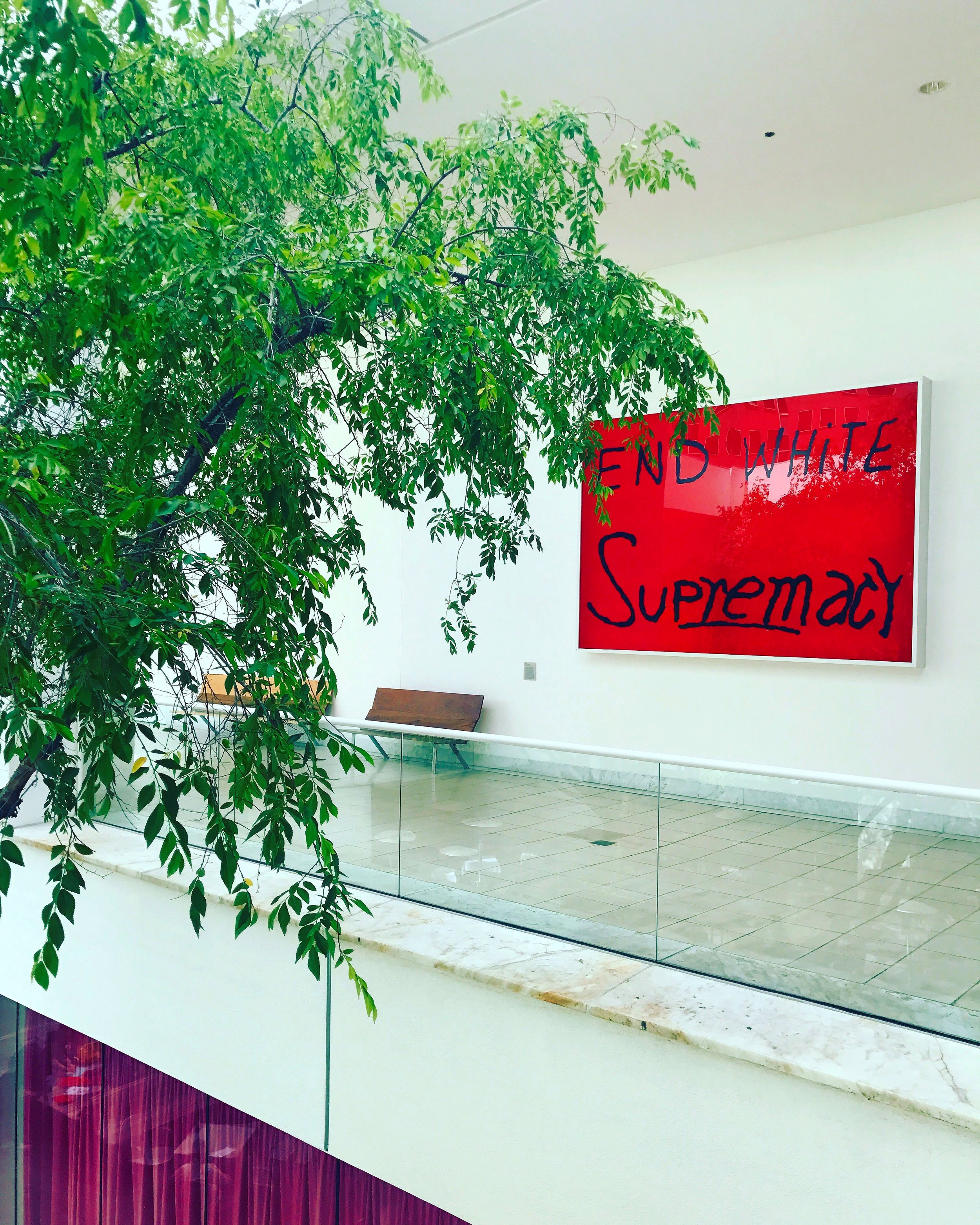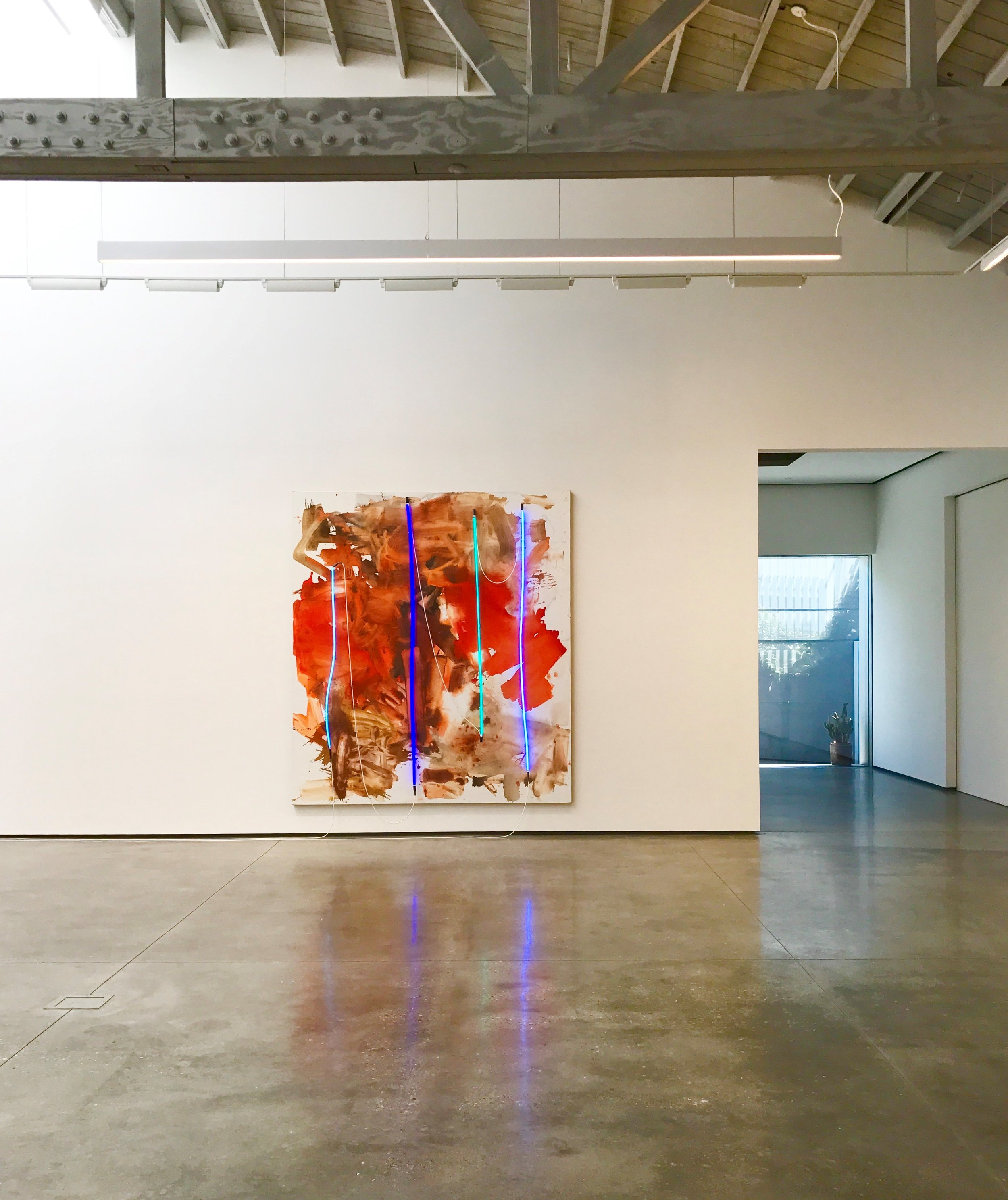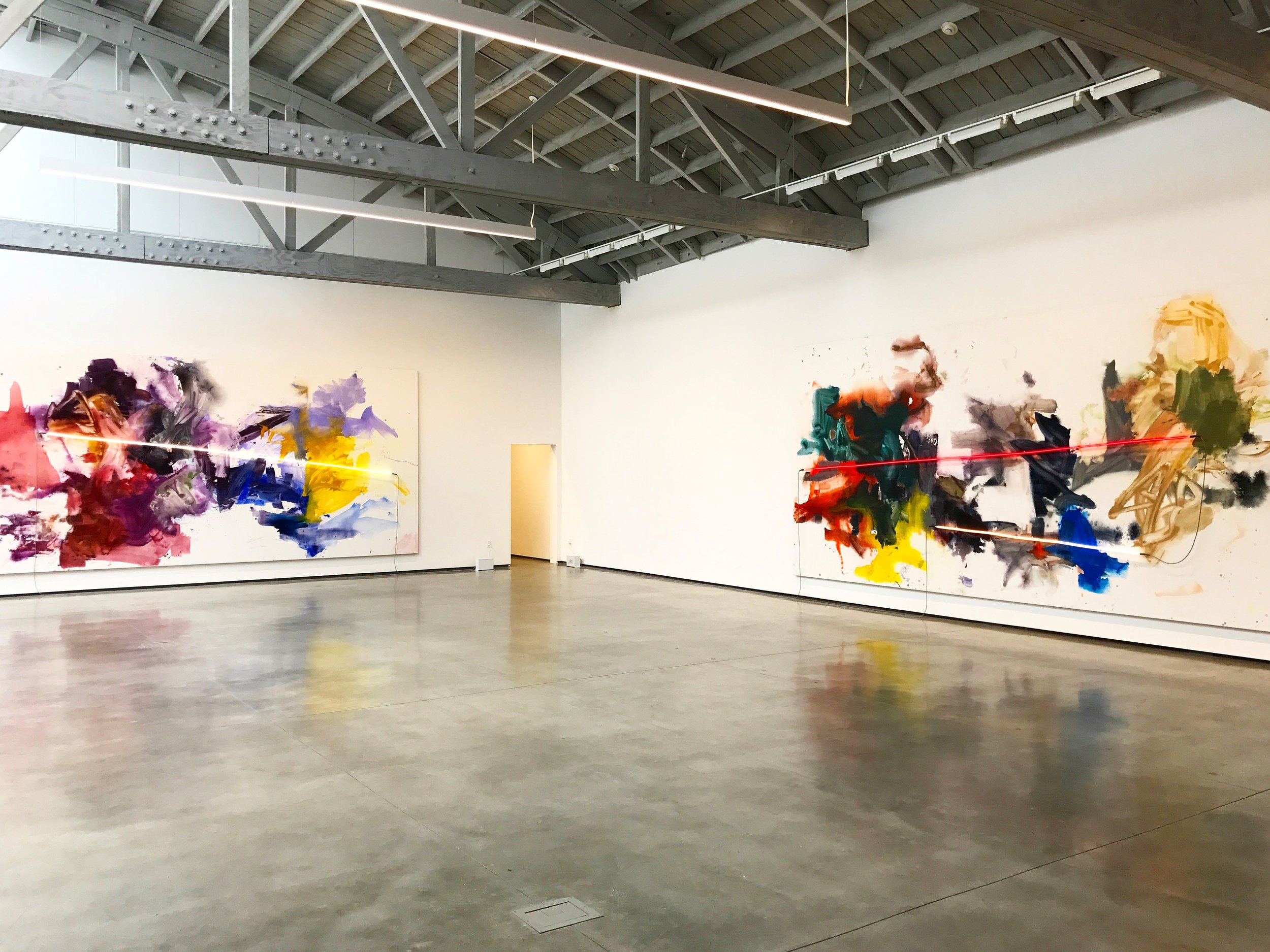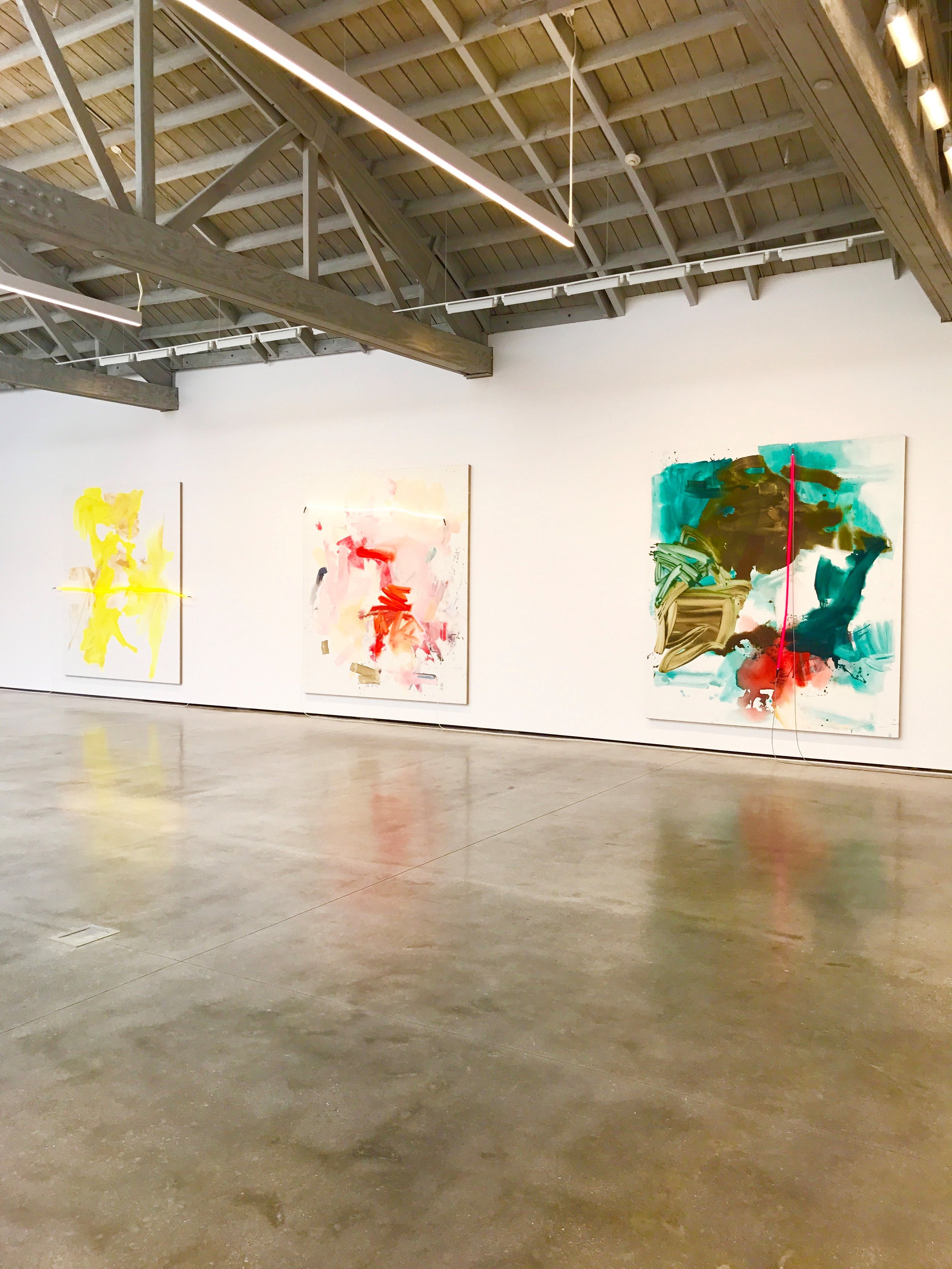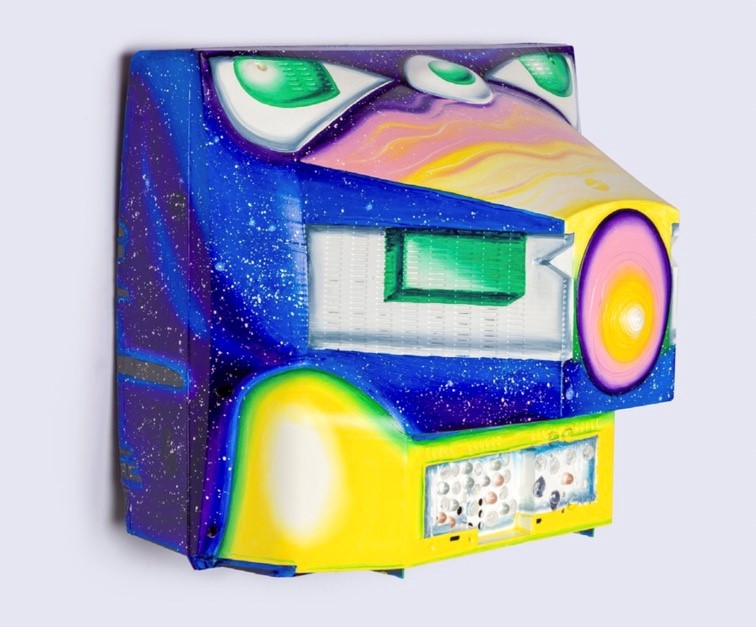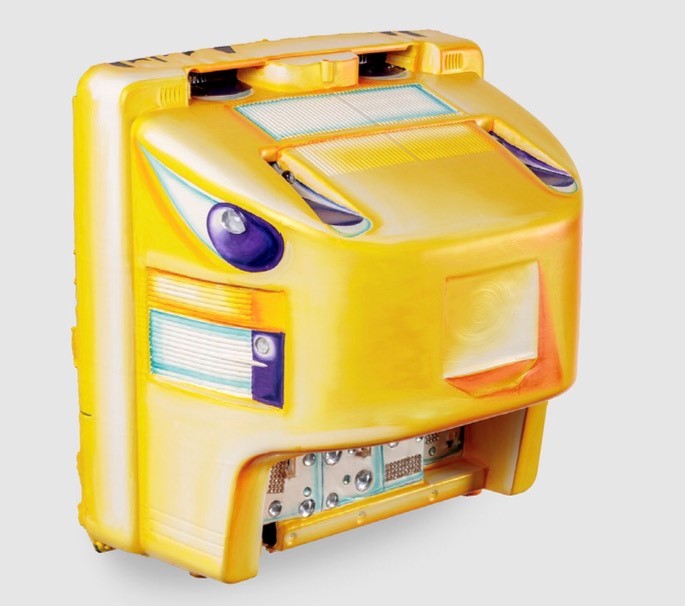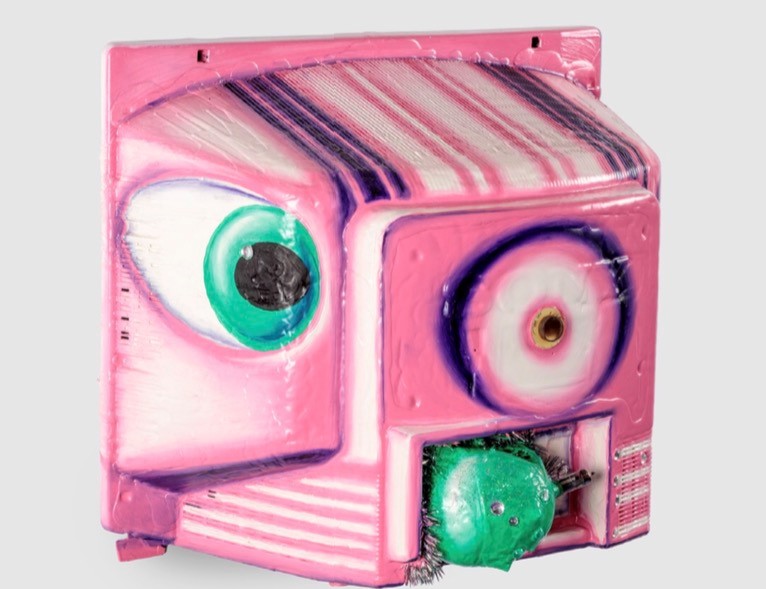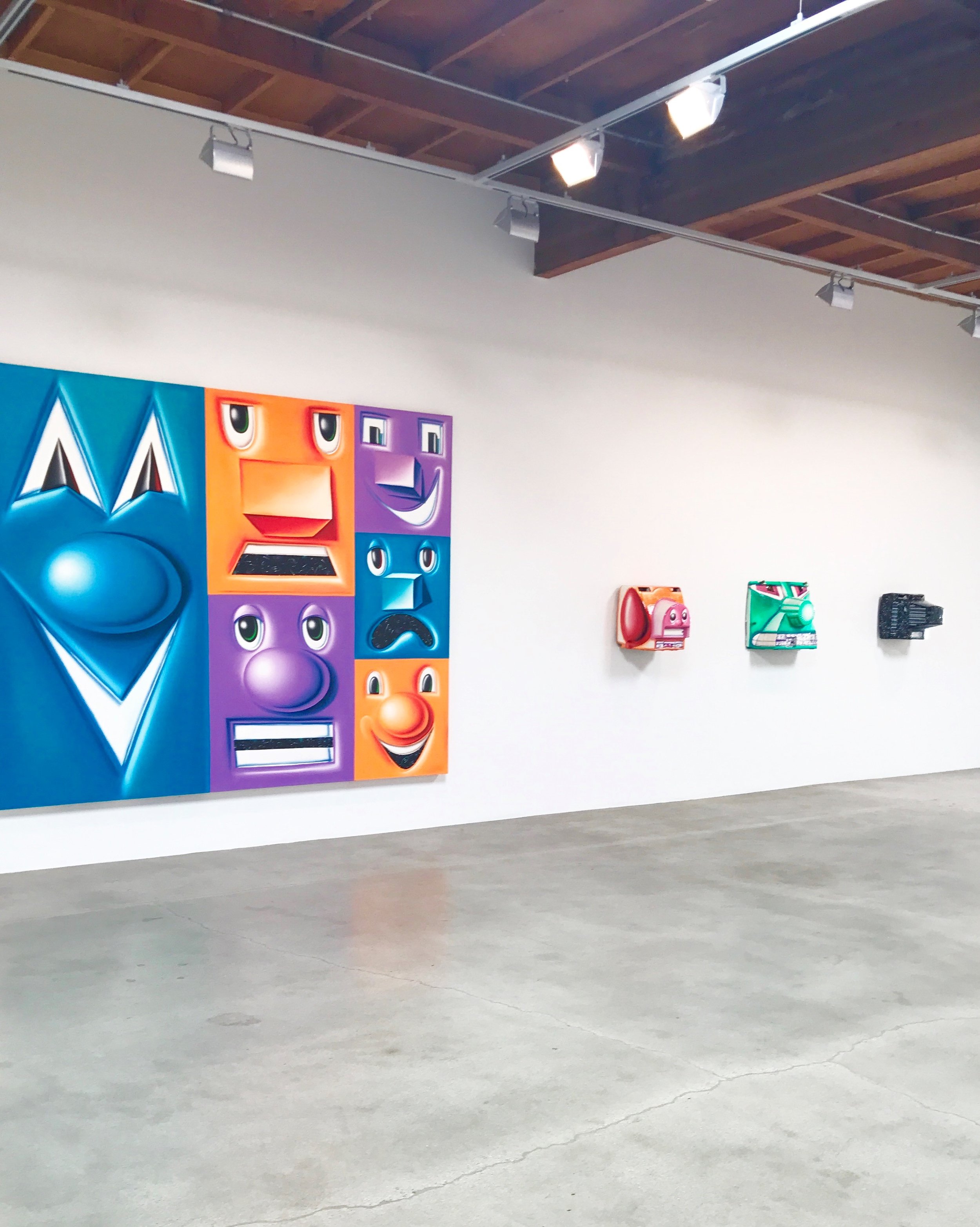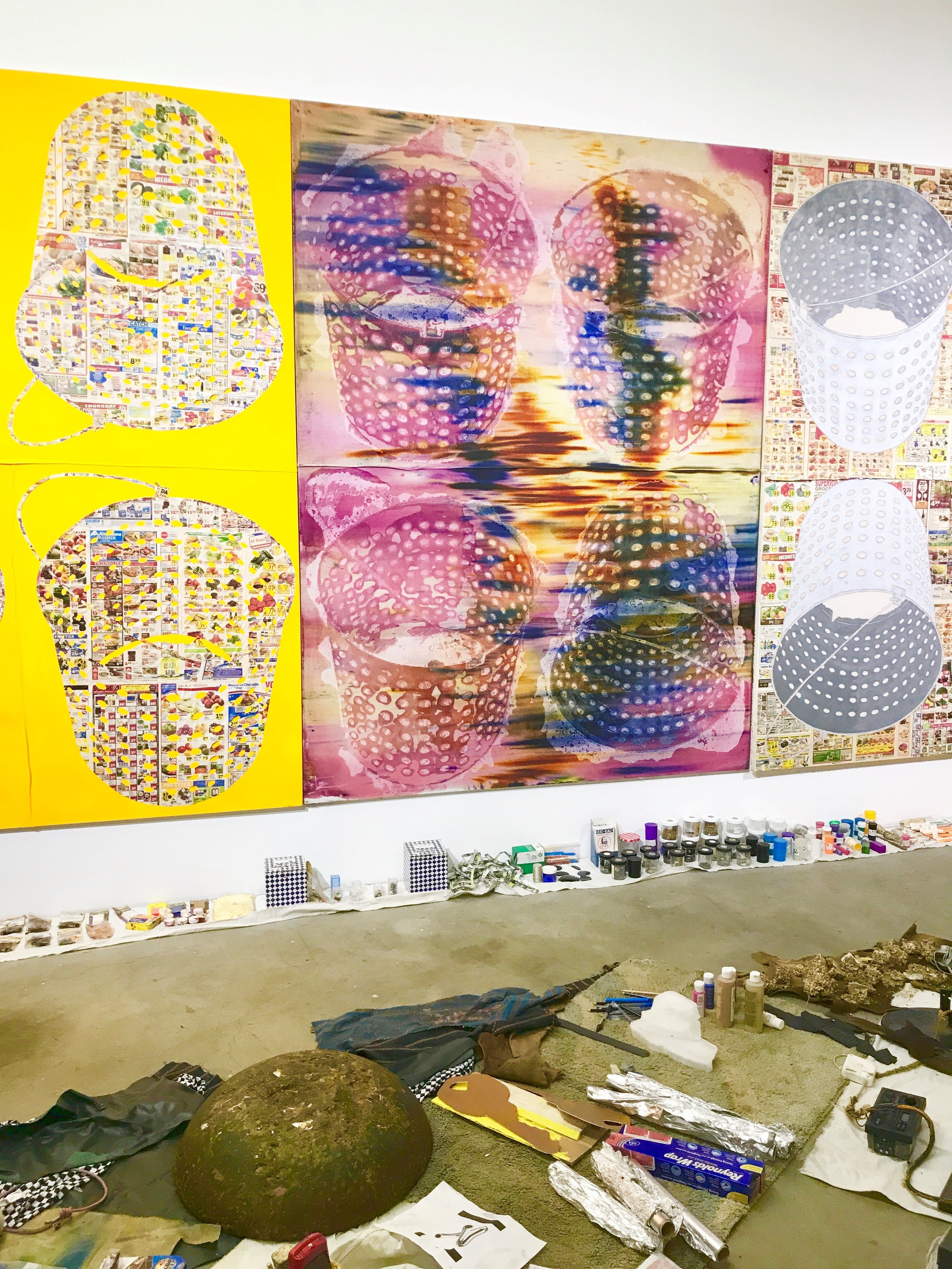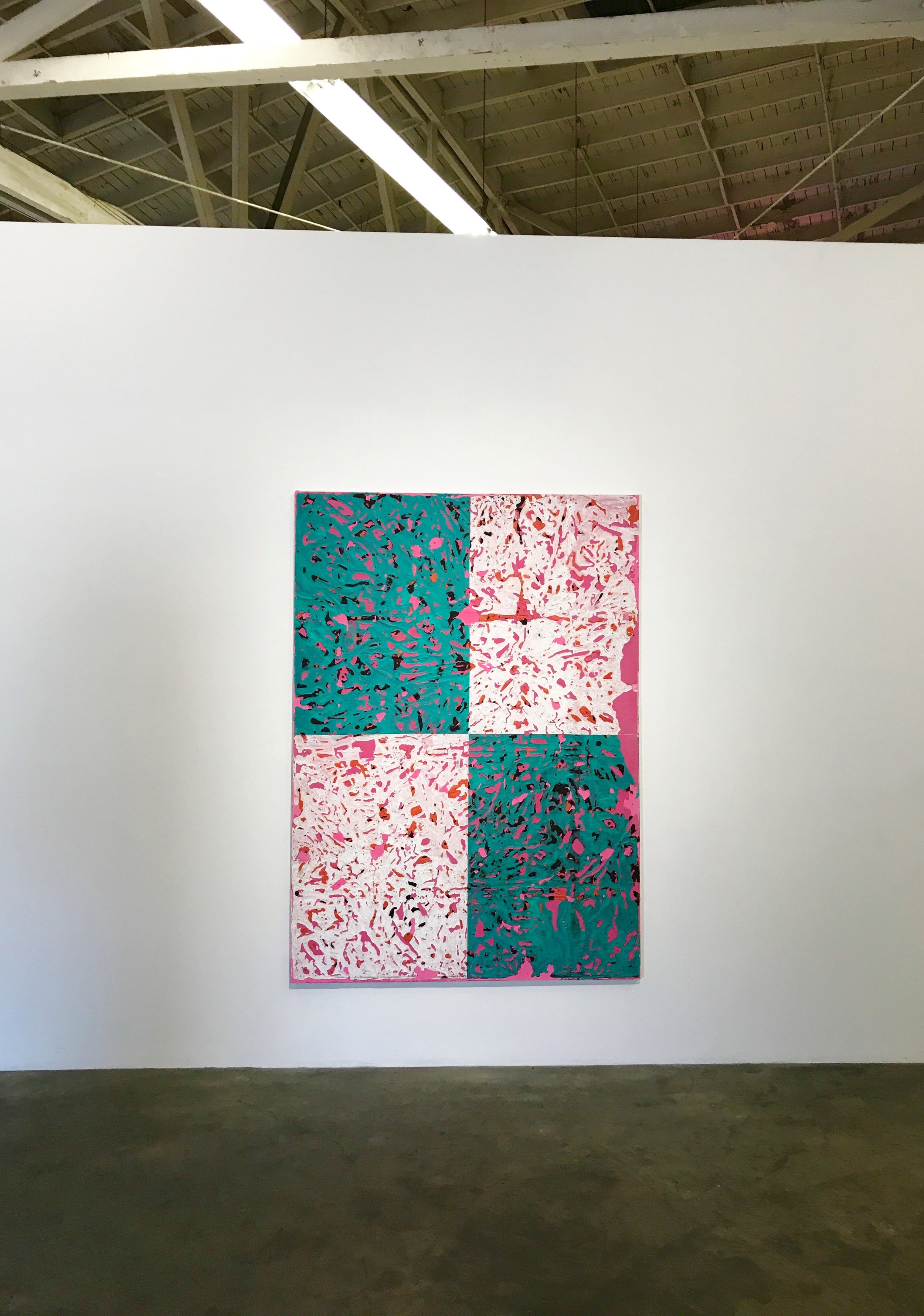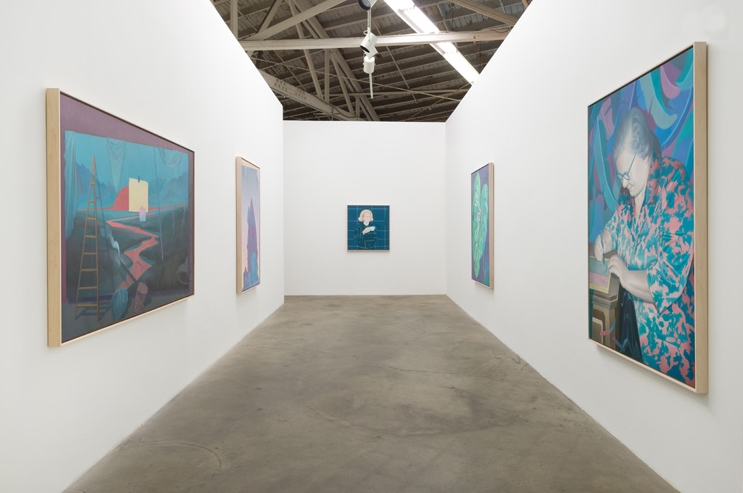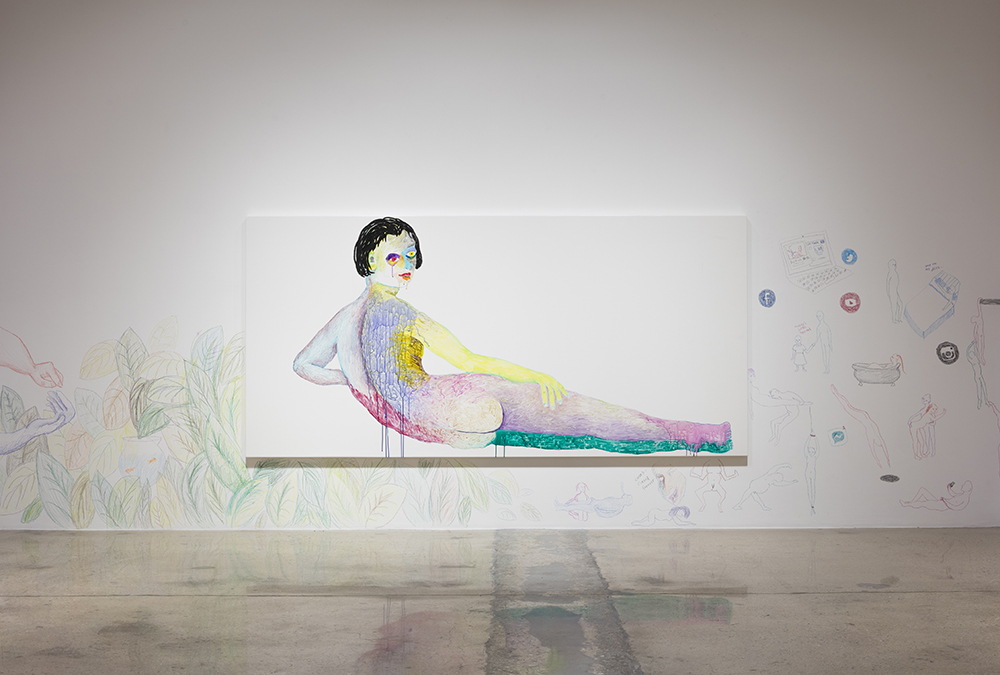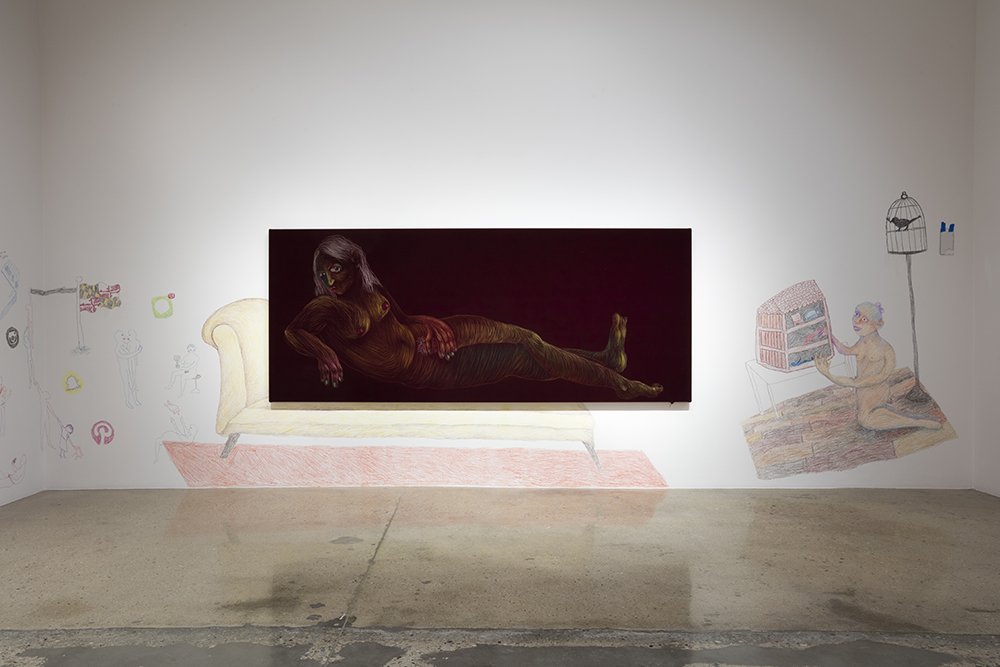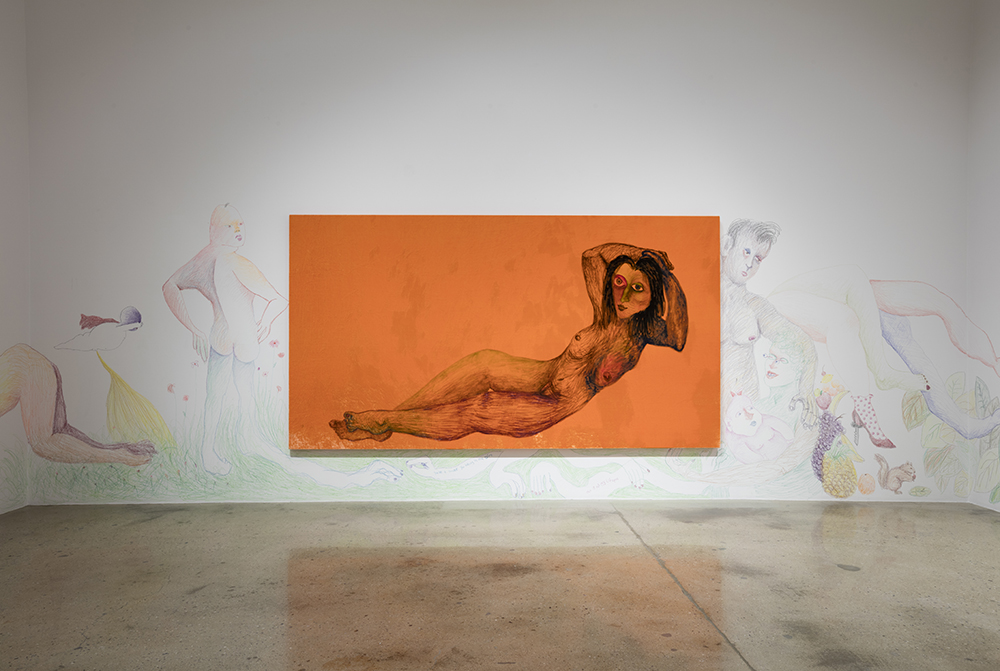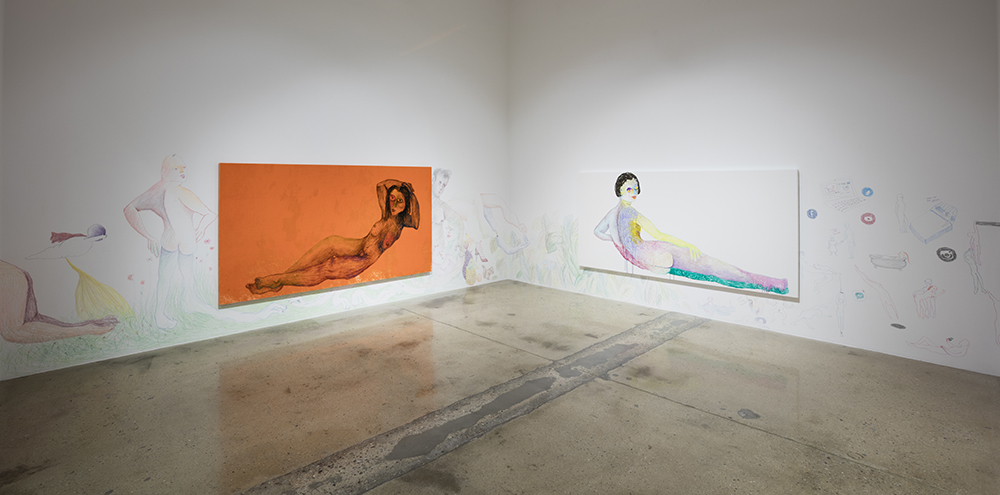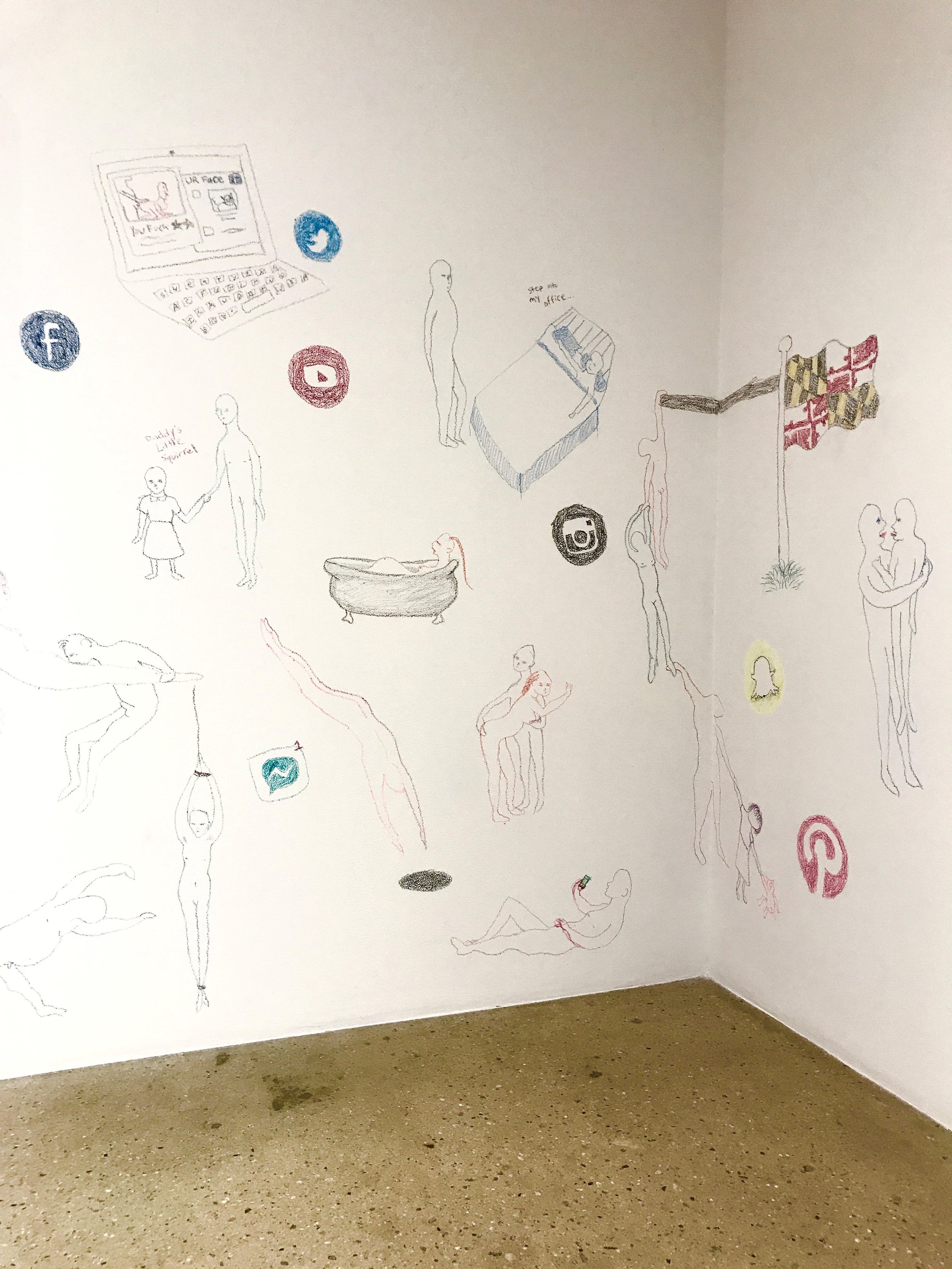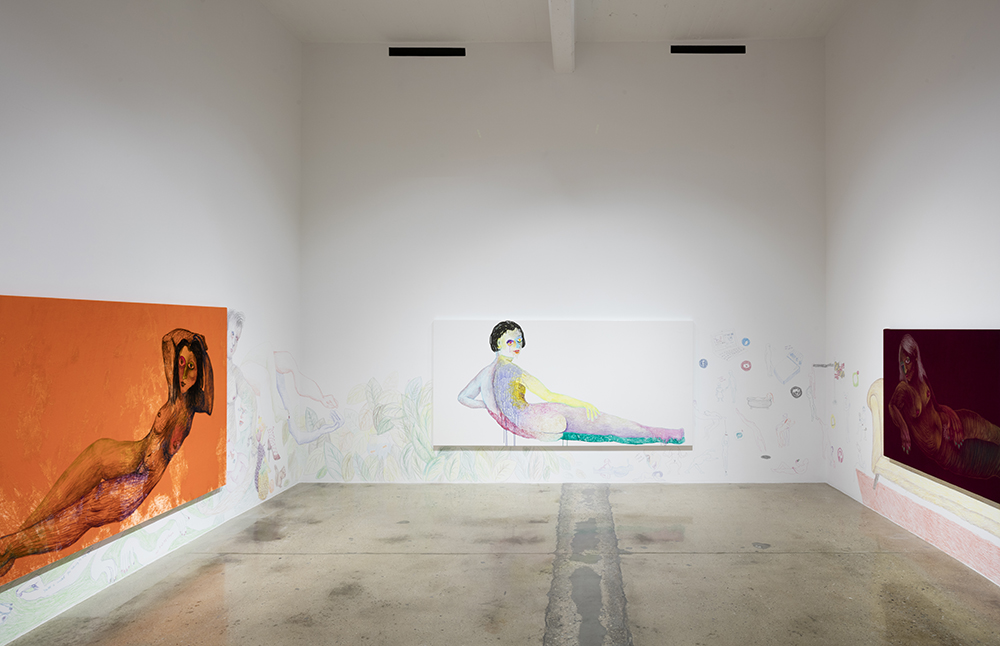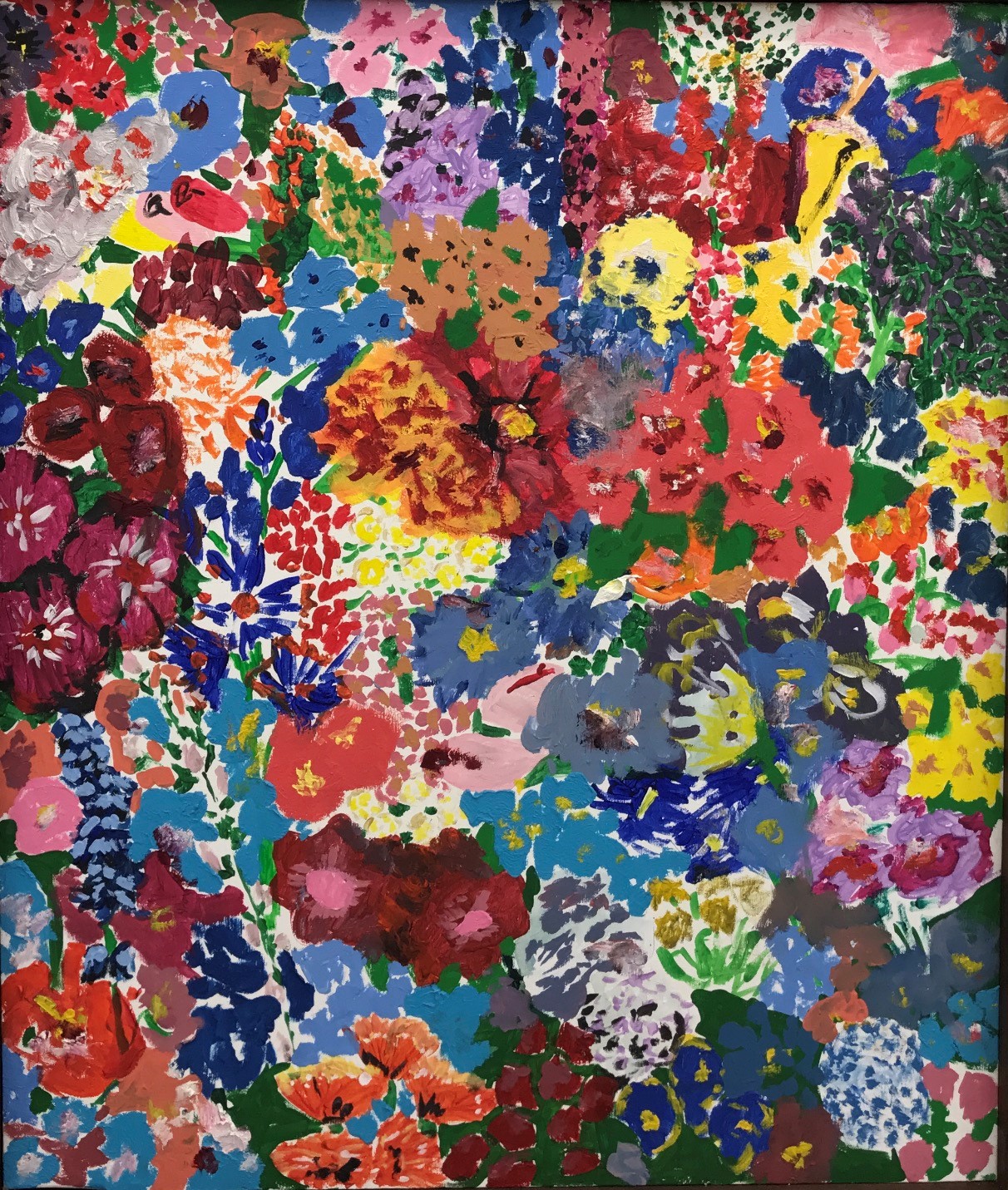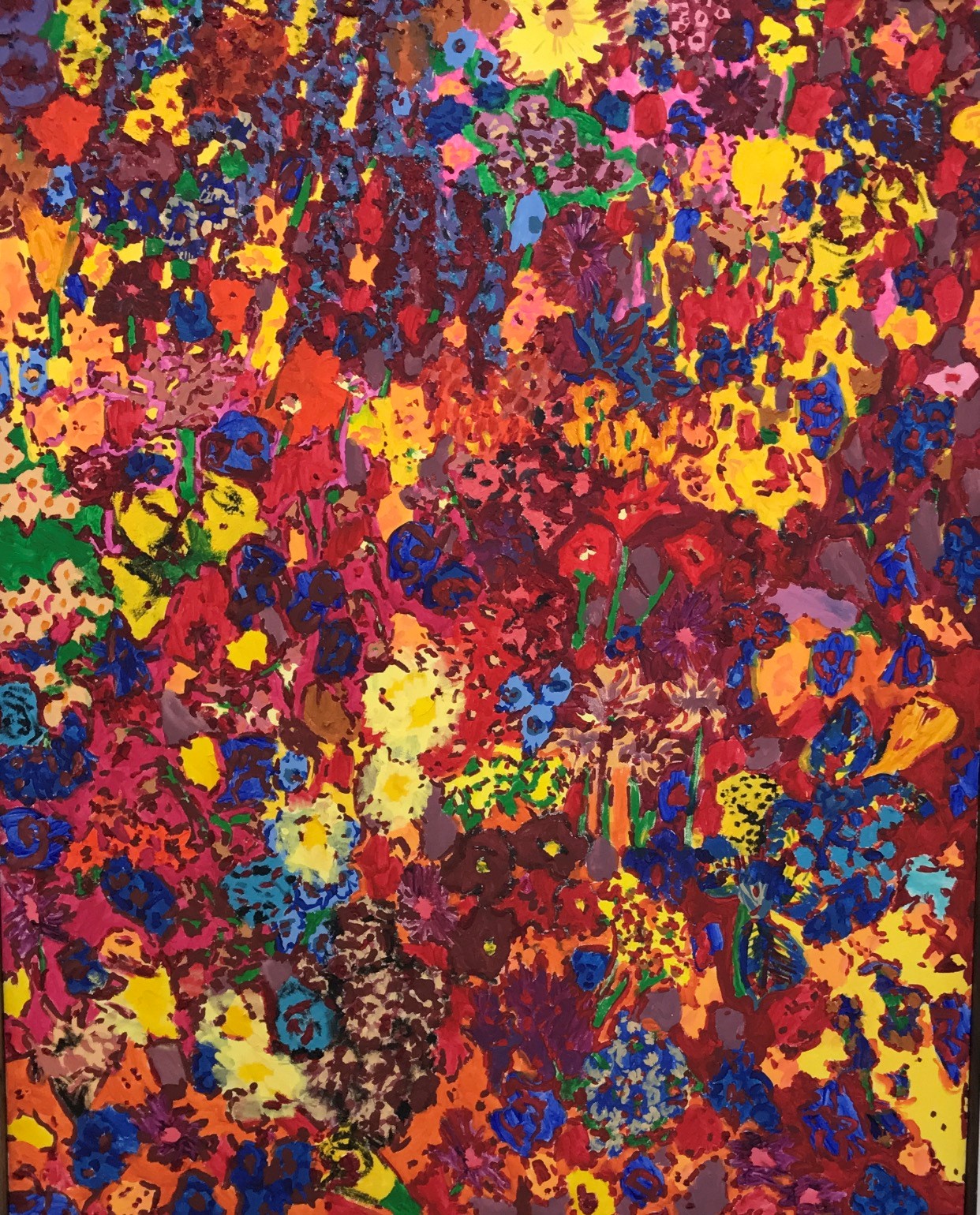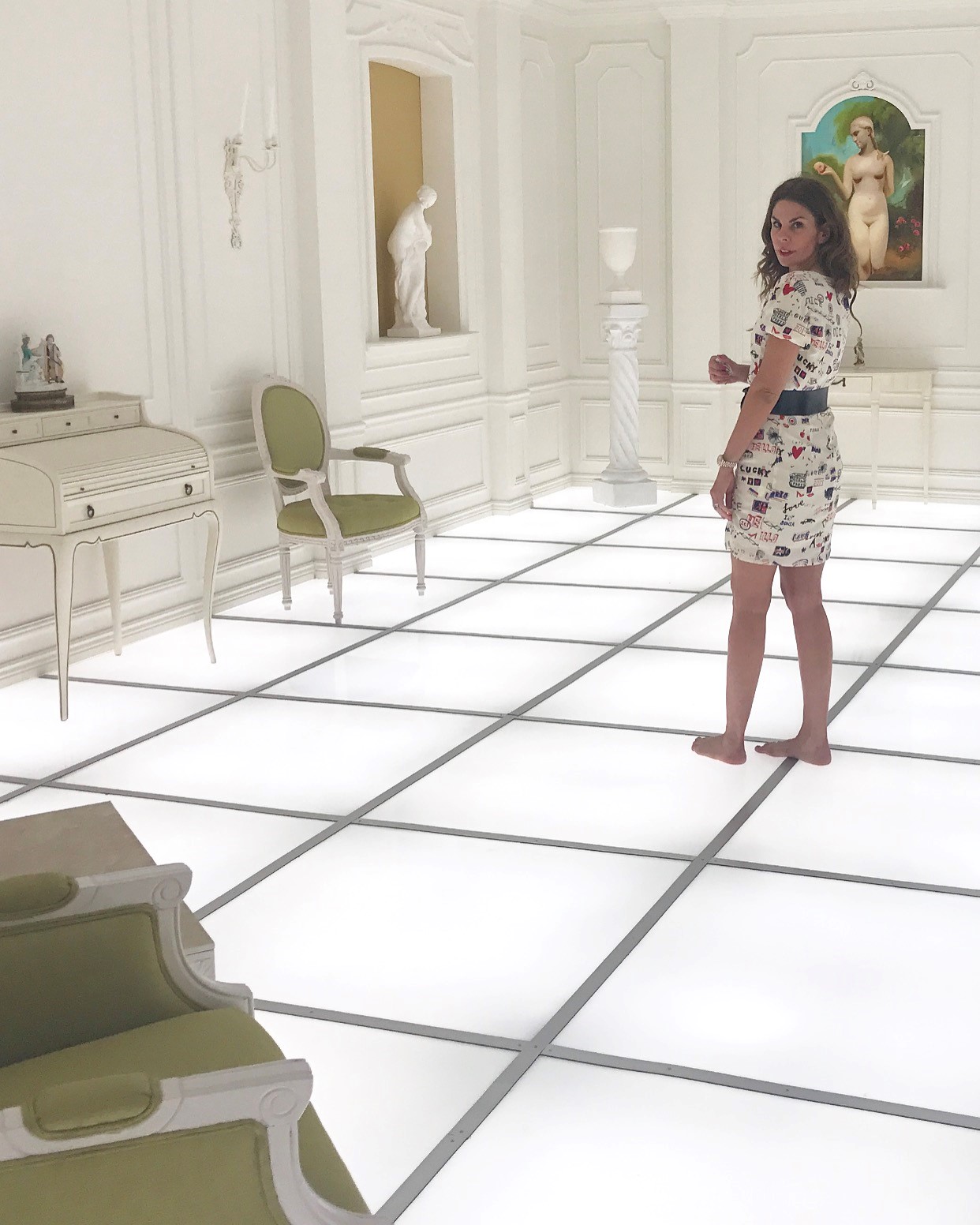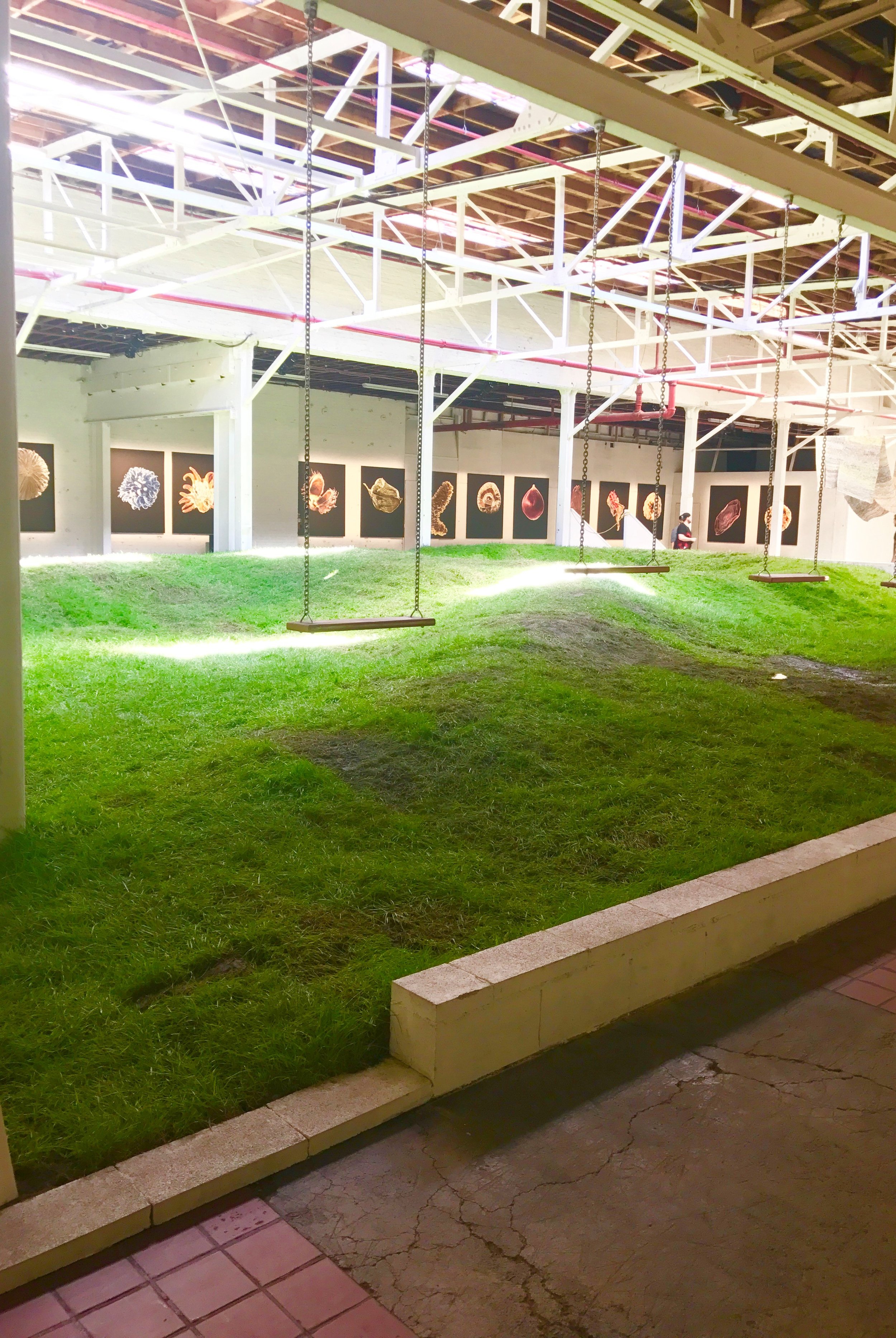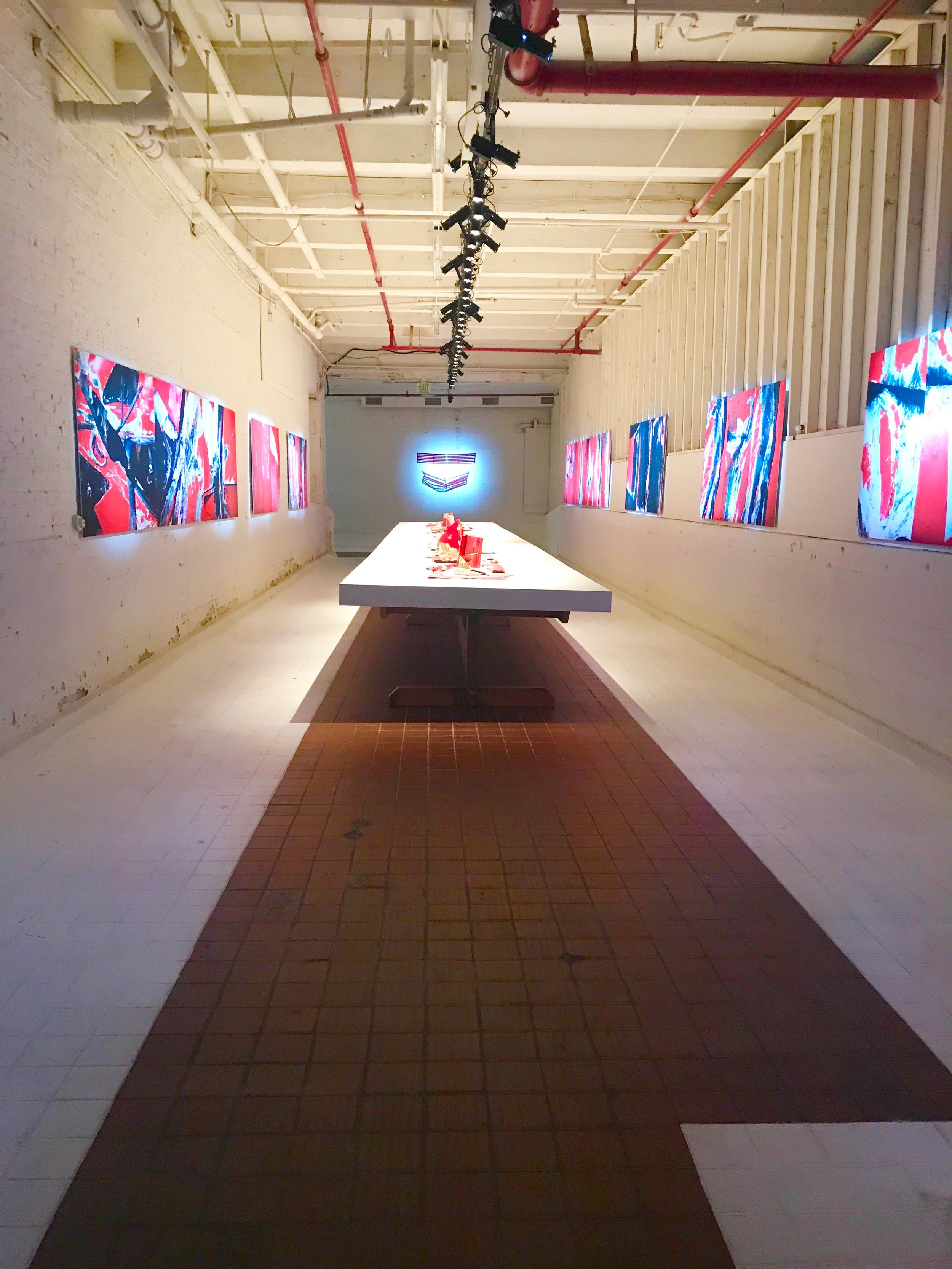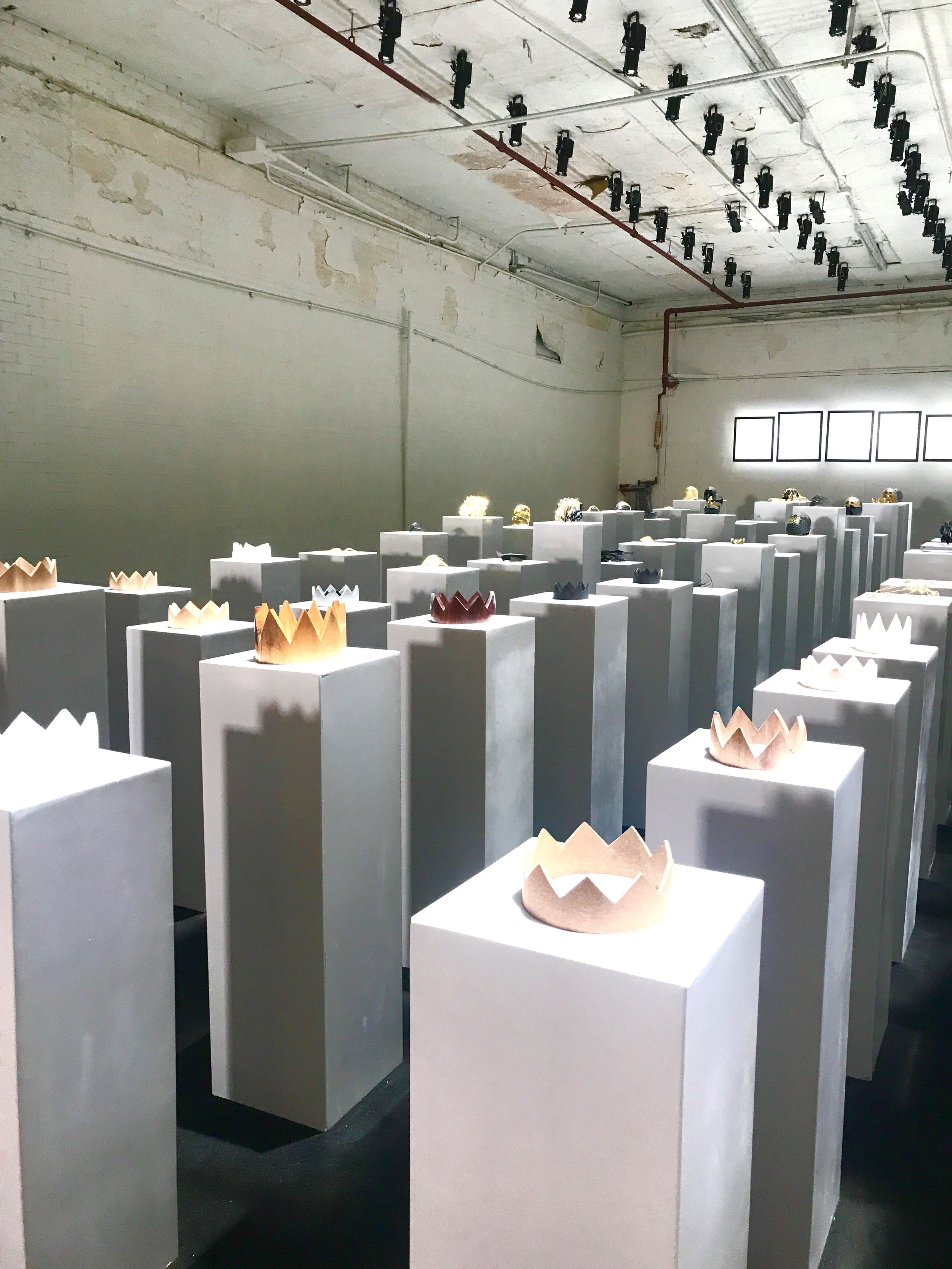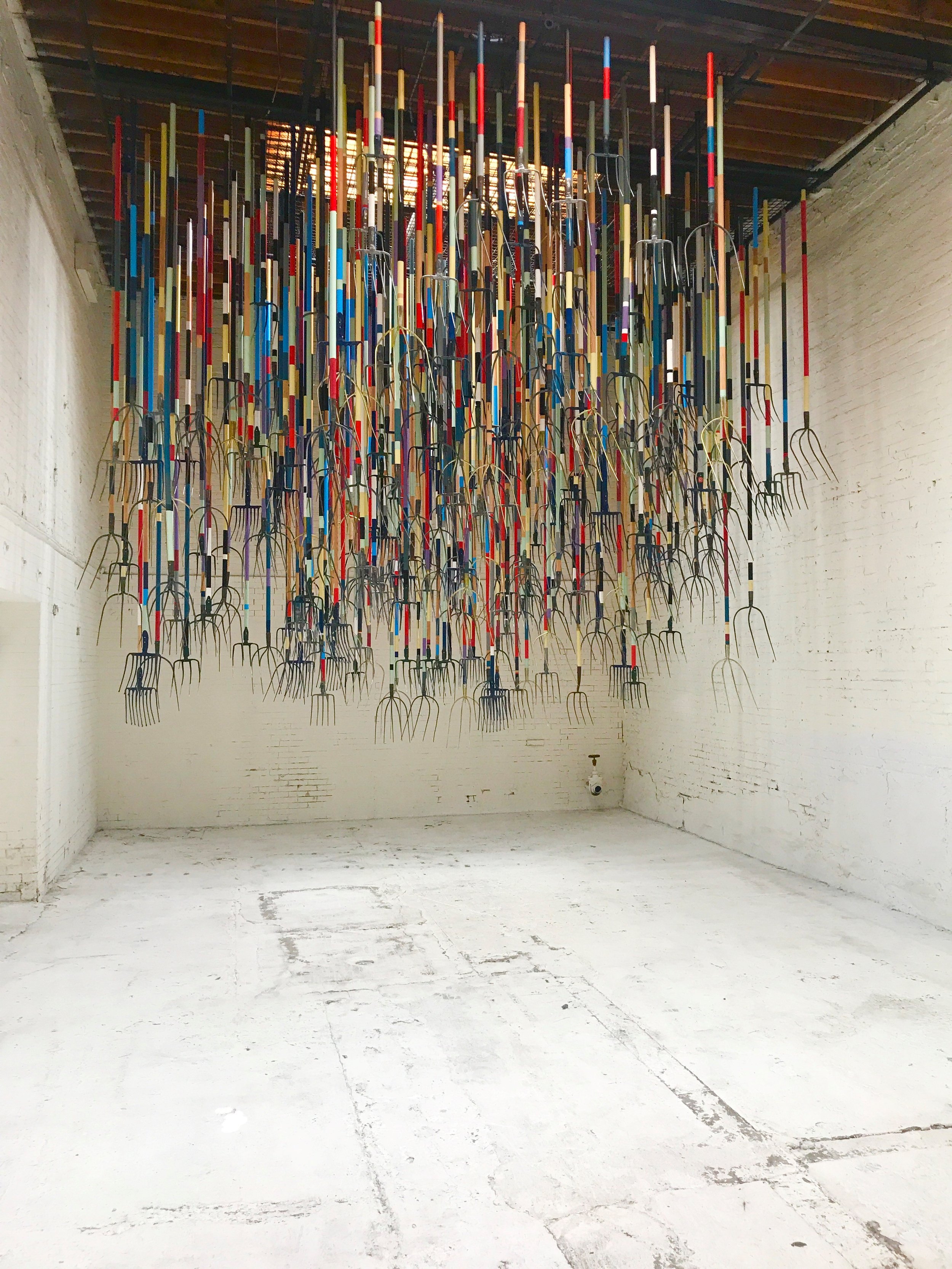California Dreamin'
I'm pretty mad at LA right now. As a die-hard New Yorker for 17 years, I have never even allowed myself the possibility of living anywhere else. It's always been New York or nowhere. But LA has lately started to challenge me in that aspect - a thought that makes me uncomfortable and seems almost sacrilegious.
Los Angeles has massively changed in the past five years, especially its cultural landscape. There are more galleries, museums are coming with stronger proposals, and artists are relocating their practices from New York and around the world. The weather, the color of the sky and the unlimited palm trees seem to add to the lure of this gigantic city. Like Dorothy Parker said: "LA is 72 suburbs in search of a city;" although I think the city has found itself.
In between my staring at the bluest sky and the greenest landscapes, going up and down all the magic hills, I was able to see so much, and this is my edit on museums and the galleries:
The LACMA, which is the quintessentially Angeleno museum, was filled with visitors in a way that I rarely see a museum in New York. The permanent collections are heavy on LA artists like James Turrell, Ed Ruscha, Robert Irwin and Chris Burden, whose lamppost installation "Urban Light" seems to have taken the spot as the unofficial symbol of the cultural side of LA. The LACMA is currently undergoing several special exhibitions, one of which is a great show comparing and juxtaposing the work of Pablo Picasso and Diego Rivera.
The MOCA Los Angeles in its main location (or MOCA Grand) in downtown LA is currently exhibiting on one side of the building that glorious traveling retrospective of Kerry James Marshall (which I saw at the Met Breuer last fall and thought the best show of 2016), and on the other side several extraordinary selections from the permanent collection, including a breathtaking room with six large and medium scale Rothkos in red, blue and yellow tones. Other highlights include an installation by Swiss artist Thomas Hirschorn that employs mannequins, carton boxes, lights, TV screens and a variety of raw images from people hurt or marred in war battlefields to address sensationalism, fake news, political propaganda and the human beings who suffer or profit from it all.
MOCA has a few other locations, the second of which is called Geffen Contemporary and is down the hill from the main location, all the way to Little Tokyo, about a 20-minute walk. This other space, which is in an expansive building renovated by Frank Ghery, is showing several exhibitions including one of my favorites: an incredible installation by Sterling Ruby comprised of stuffed biomorphic shapes hanging from the ceiling, placed on the floor and covering all the walls.The fabrics employed by Ruby evoke the colors and motifs of the American flag, showing the intensity and as of last November, may we say, craziness, of the American political scene.
The Broad: Eli and Edythe Broad have spent 50 years collecting art. But not just collecting any art. This couple means business and they own some of the biggest, most spectacular, famous and important post-modern and contemporary artworks from the most high-profile artists, ever. For example, the gigantic "Tulips" sculpture by Jeff Koons is one of the first things one encounters upon entering the main exhibition floor two levels up from the street. "Tulips" is flanked by an 82-feet triptych by Takashi Murakami, and then each room in the space is dedicated to an artist or a group of artists. There is a gallery for Warhol; in another three Basquiat canvases share space with one giant Keith Haring tarp; in another, Kara Walker's silhouette is imprinted on the wall, interacting with some of her most iconic carton cut-outs. The stunning contemporary building, which opened in September of 2015, was designed by the architectural firm Diller Scofidio + Renfr and some of the walls and ceilings have the structure of a honeycomb to let the natural light filter in. Note: thank God my LA host took me to The Broad as a guest and I didn't randomly decide show up. The line went around the block and the tickets are free, albeit limited and timed, so plans to visit must be made in advance.
The Hammer: this is the UCLA art museum that is located on campus and the surrounding scenery is just perfect: meticulously manicured gardens, movie-like-dorm buildings, Hollywood-esque sorority and fraternity houses, and so on. The Hammer itself is very beautiful and manageable in size; it is also a museum that pushes boundaries. Everything I saw was very much of the moment, including that large Sam Durant lightbox that says "End White Supremacy", a fair outcry to match the political events we are living every day. I loved the internal courtyard and all the surrounding vegetation, which ends up interacting with the art experience too. One of my favorite installations was the Kevin Beasley project, which inside of a small gallery behind a black curtain created an elaborate altar inspired by Bernini's Baroque piece in Saint Peter's Basilica in Vatican City, interspersed with a rattan peacock chair looking almost like a papal throne and an infamous image of Black Panther founder Huey P. Newton, surrounded by colorful fabrics arranged in a way that gave the impression of having hundreds of people around the altar. It was a very interesting take on race, religion, who's good, who's bad, and our current historical moment. The other installation that captivated me was Andrea Bowers' response to the Standing Rock events, where the construction of the Dakota Access Pipeline threatens to cut through Sioux land without consent or consultation. Bowers tackles art and political activism on several walls in the main entrance of the museum, including a mural with diagrams showing the names of the oil companies behind the pipeline construction, a wall with blinking neons showing the words "Water is Life" and "Tierra y Libertad," and an installation with colored ribbons writing out phrases like "People over Pipelines" and "Planet Over Profits."
On the gallery side, the shows I loved included:
Mary Weatherford never got the love she deserved while she lived in New York. Luckily, as a native Angeleno, she moved back 18 years ago and is now reaping the fruits of her labor. Weatherford's giant abstract canvases, cut through with neon tubes, are stunning, engulfing, gestural and poetic. Her solo show at David Kordansky Gallery is probably one of her bests.
Dara Friedman's video installation "Mother Drum" at Kayne Griffin Corcoran was pretty haunting. Dara, who's German but lives in Miami, was fascinated when she learned about recent excavations in the area of what is now Brickell, which uncovered the remnants of the ancient, aboriginal city of Tequesta. Dara placed ads on powwow.com and filmed several Native American Indians on the Swinomish Reservation in Washington, Coeur d'Alene Reservation in Idaho, and Crow Agency Reservation in Montana playing music, dancing and performing. The result is a colorful and powerful film with rhythmical sounds where the drum is central. The projection on three contiguous screens, each of which may have a different take at any given time, is fascinating and poignant, and shows a group of people who are completely disregarded and marginalized, yet the very genesis of this country.
Sprüth Magers has a group show called "Power" that surveys the work of African American women artists from the nineteenth century to now. Some of the participants are very well known names like Kara Walker, Julie Mehretu, Mickalene Thomas and Xaviera Simmons. The show is indeed pure visceral energy, and the fact that is an all-female group takes the exhibition to the next level.
Holly Coulis is a fantastic painter that I'm sad I didn't discover before. Her solo show at Cherry and Martin gathers a group of small-scale still lives that pack a big punch. Holly uses bold colors, great lines and geometric shapes to capture the audience's full eye and attention.
The ever-so-cool Kenny Scharf has a vibrant and colorful solo show at Honor Fraser Gallery. Among paintings, sculptures and assemblages, for me the winners in this show are the sculptures on the wall made of abandoned TV monitors found in the streets of Los Angeles, which Kenny has painted over with his traditional characters that have funny expressions but truly embrace a critique of mainstream media and extreme commercialism.
At Night Gallery I discovered two young LA-based artists, both very different but equally interesting. JWP3's solo show covered 3/4 of the massive warehouse where this gallery is housed. It featured a combination of richly textured abstract paintings made with wax, ink and enamel on canvas; several installations that included meticulously arranged materials and supplies from the studio, and a metal cage where people can come in and bounce inside while accompanied by effects like sound and fans. The other show in the gallery, much smaller and tighter, is of Kean Mayman’s oil paintings, which utilize beautiful color palettes reminiscent of Los Angeles' sunsets: green, purple, magenta and the undertones in between. The subject matter is the artist's distrust of mainstream media and the conspiracy theories behind the existence of the current administration. How did Donald Trump become President? Is it black magic? Astrology? Collective unconscious? Hypnosis of the masses?
At Steve Turner Gallery, one of the shows really got me: Ann Hirsch, who's based in LA, created three, beautiful, large-scale drawings that reinvent three of the most iconic classic paintings: Titian’s Venus of Urbino, Goya’s La Maja Desnuda and Ingres’ Grande Odalisque. Her women are less erotic; interestingly, the drawings she made on the walls of the gallery around the pieces are delightful and x-rated.
Matthew Chambers is a young artist who recently moved from LA to Montana and has been painting canvases with lush flowers in gorgeous colors, imagining what it would be to see the Spring once all the snow melts away. His solo show at Praz-Delavallade is very moving - pure testaments of the soul and the creativity of someone who I think is a sweet man with a great soul.
At Industry Gallery, a great selection of works by Finnish-born but LA-based artist and designer Janne Kytanne presented a majority of pieces completely 3-D printed. The resulting sculptures and pieces of furniture are humorous, ingenious and beautiful. The ping-pong table called "the Deceptor" is a brilliant merger of sports and art: the faceted paddles allow players' trick shots, and the custom ping-pong balls fly through the air unaffected by the wind.
Jason Rhoades was Los Angeles's bad boy artist, who tackled social dynamics, sexuality, politics, commerce, gender and racial stereotypes without an ápice of shame. Although he died 10 years ago at the age of 41, his work is now more relevant than ever. Hauser & Wirth organized Rhoades' first major LA show with six enormous installations that survey his 12-year career. The most impressive of the installations is My Madinah. In pursuit of my ermitage… (2004), created almost to replicate a temple, floors covered in ethnic rugs, crystals, stools, incense... and then above, hanging from a million entangled wires, 240 neons with "pussy words" and other slang for the female genitalia, almost like a cloud floating on top of it all. Rhoades wanted to challenge Islamophobia through political incorrectness by shedding light on the hypocrisy of righteous governments and the moral corruption of our society, regardless of religious beliefs or geographical location.
The 14th Factory is an ambitious project by English-born artist Simon Birch. Birch relocated from Hong Kong to LA and took over three acres of warehouse space in the downtown area and split the space into several interconnected interactive installations that go from pitch-black giant sculptures mimicking meteorites, to a perfect replica of Stanley Kubrick's Odyssey 2001 set that instead of classic paintings on the walls have pieces by Chinese contemporary artists. There is a surprising garden with swings surrounded by Birch's paintings and photographs as well as other collaborators. There are several rooms with screens and videos that feel existential and dramatic. While I enjoyed the experience and think this should be seen, there's something about the overall connection - or disconnection- of these rooms that left me feeling as if something was lacking.
I can't possibly cover all that I saw and all the places I went, but I can firmly say that flirting with LA never felt so good.







